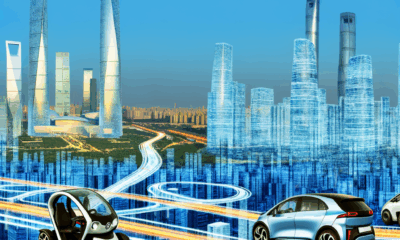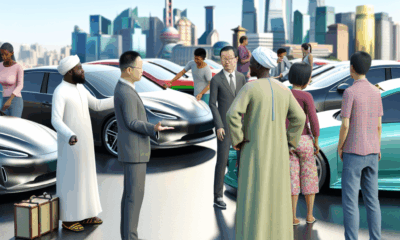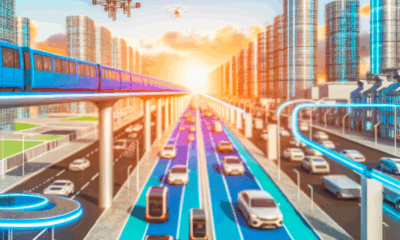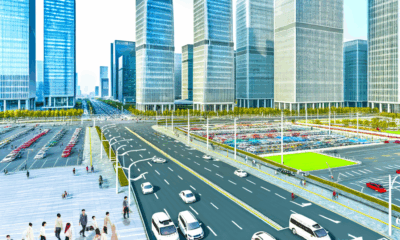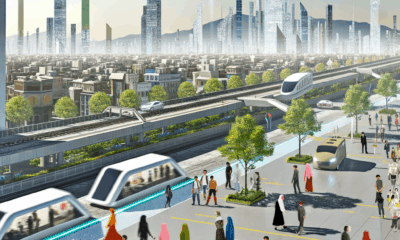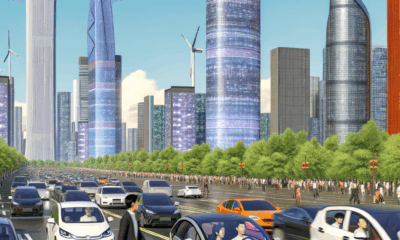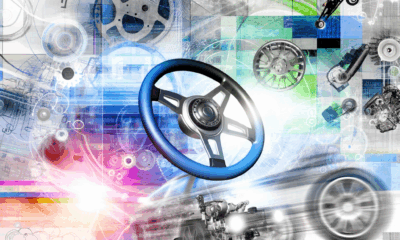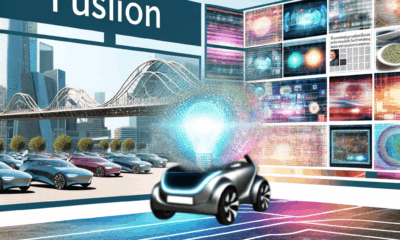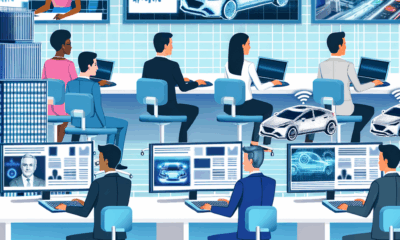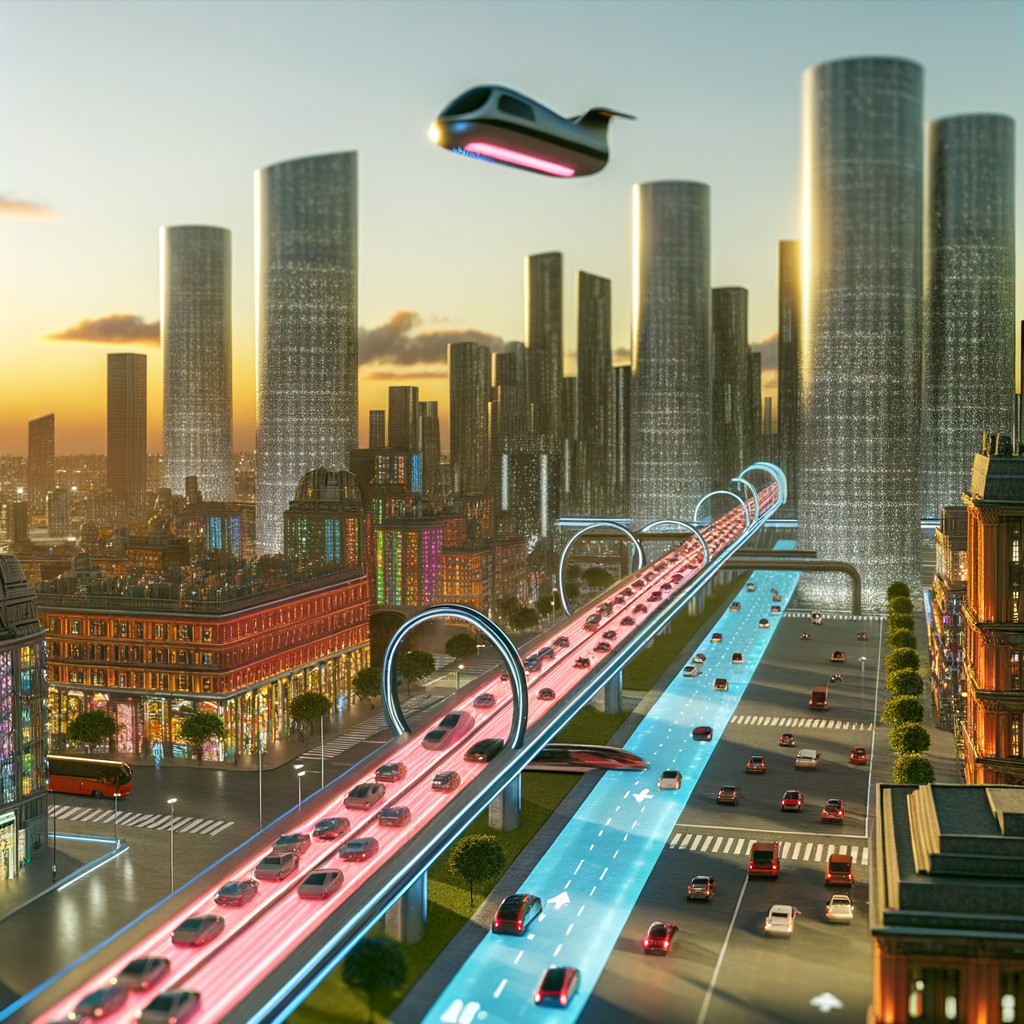
Navigating Tomorrow: The Comprehensive Guide to Emerging Transportation Trends and Mobility Solutions
This market analysis report delves into the latest transportation trends and mobility solutions, highlighting the rise of sustainable transportation, led by electric vehicles (EVs), and supported by technological innovations and favorable regulatory policies. It emphasizes the importance of ride-sharing services, car-sharing programs, and bike-sharing initiatives in reducing urban congestion and pollution, while exploring the transformative potential of autonomous vehicles (AVs) in enhancing traffic safety and accessibility. The report also sheds light on smart city solutions and their role in improving public transportation through IoT and AI technologies, aiming for more efficient urban environments. Additionally, it examines shifts in consumer behavior towards more flexible and sustainable mobility options, within a supportive regulatory landscape. The analysis underscores the interconnectedness of environmental impact, technology, and consumer demands in shaping the future of transportation and mobility solutions.
In an era where the pace of innovation outstrips the speed of our daily commutes, the latest Mobility Report emerges as a crucial compass guiding us through the evolving landscape of transportation and mobility solutions. This comprehensive document delves deep into the currents shaping how we move, offering unprecedented insights into transportation trends, mobility solutions, and the future of movement. From the bustling streets of our urban centers to the quiet roads of rural areas, the way we traverse our world is undergoing a transformation fueled by advancements in public transportation, ride-sharing services, car-sharing programs, electric vehicles (EVs), bike-sharing initiatives, autonomous vehicles, smart city solutions, and sustainable transportation practices.
As we stand at the crossroads of technological innovations and environmental imperatives, the Mobility Report serves as an invaluable resource for policymakers, businesses, researchers, and stakeholders. It provides a detailed market analysis, sheds light on consumer behavior, navigates the regulatory landscape, and assesses the environmental impact of emerging and existing mobility solutions. Whether you're invested in the future of electric vehicles, intrigued by the potential of autonomous technology, or committed to advancing sustainable transportation, this article, "Exploring the Future of Movement: Unveiling the Latest Trends in Transportation and Mobility Solutions," promises to equip you with the knowledge and insights needed to navigate the dynamic terrain of the mobility sector.
"Exploring the Future of Movement: Unveiling the Latest Trends in Transportation and Mobility Solutions"
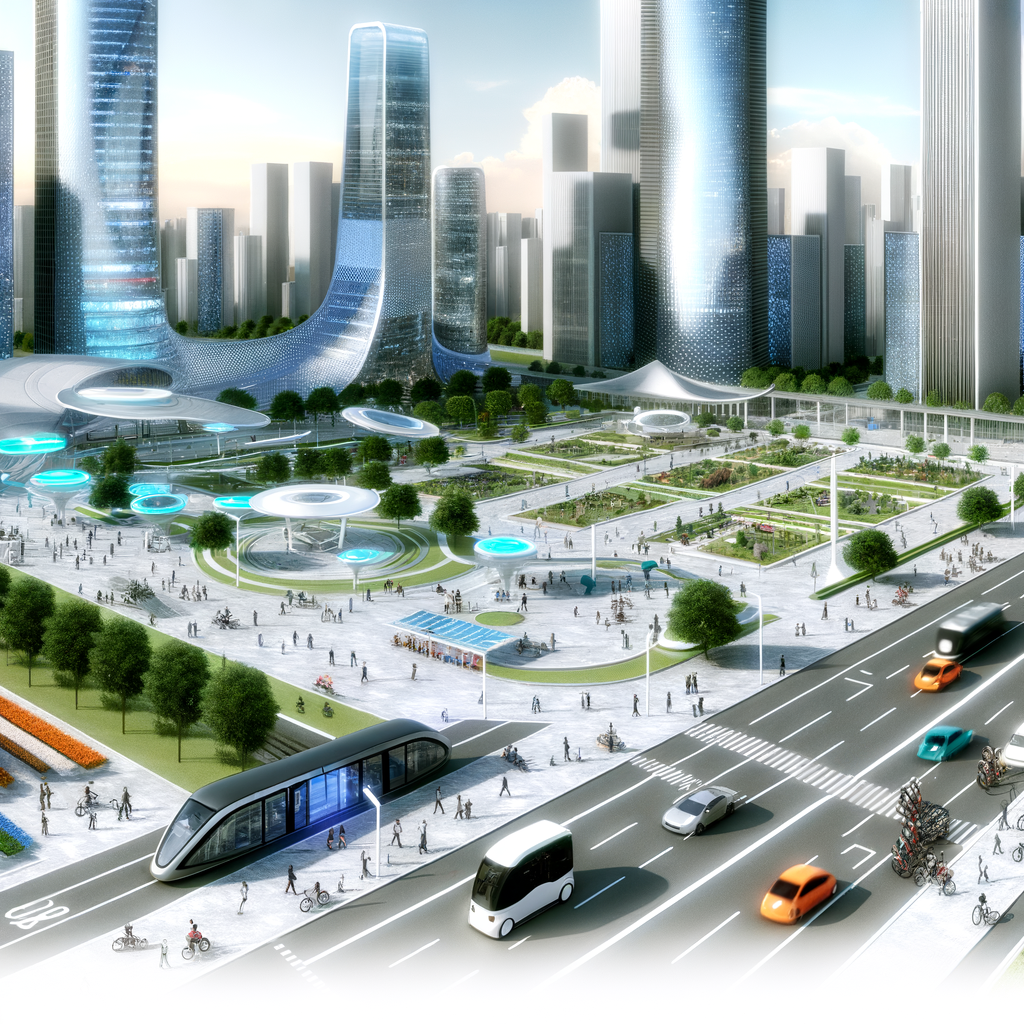
In the rapidly evolving world of transportation and mobility, staying ahead of the curve is crucial for policymakers, businesses, and consumers alike. The latest mobility report sheds light on emerging transportation trends and mobility solutions that are set to redefine the way we move. From public transportation enhancements to the rise of electric vehicles (EVs), this comprehensive analysis delves into market trends, consumer behavior, technological innovations, the regulatory landscape, and the environmental impact of new transportation modalities.
One of the standout trends in the mobility sector is the growing emphasis on sustainable transportation. As environmental concerns become increasingly paramount, electric vehicles (EVs) are gaining traction, heralding a significant shift towards greener, more sustainable mobility solutions. This surge in EV popularity is bolstered by advancements in battery technology and supportive regulatory policies aimed at reducing carbon emissions.
Ride-sharing services and car-sharing programs continue to flourish, offering convenient, flexible, and cost-effective alternatives to traditional vehicle ownership. These shared mobility solutions not only alleviate traffic congestion but also contribute to a reduction in urban pollution levels. Furthermore, bike-sharing initiatives are emerging as a popular mode of eco-friendly transportation, particularly in densely populated cityscapes where reducing carbon footprints is a priority.
Autonomous vehicles (AVs) represent another frontier in the mobility revolution. While still in the developmental phase, AVs promise to transform the transportation ecosystem by enhancing road safety, improving traffic management, and providing mobility for all segments of the population, including the elderly and those with disabilities. The integration of autonomous vehicles into public transportation and ride-sharing services could dramatically change how we think about personal and public transit.
Smart city solutions are also at the forefront of transforming urban mobility. By leveraging data analytics, IoT devices, and artificial intelligence, cities are becoming more connected and efficient. These technologies enable real-time traffic management, smart parking solutions, and enhanced public transportation systems, making urban centers more livable and sustainable.
The mobility report also highlights the importance of understanding consumer behavior in shaping the future of transportation. As preferences shift towards more flexible, efficient, and sustainable mobility options, businesses and policymakers must adapt to meet these evolving demands. Moreover, the regulatory landscape is playing a pivotal role in facilitating this transition, with governments worldwide implementing policies to encourage the adoption of cleaner, smarter transportation technologies.
In conclusion, the future of movement is poised for remarkable transformations, driven by a confluence of technological innovations, environmental considerations, and changing consumer preferences. By staying informed about the latest trends in transportation and mobility solutions, stakeholders can navigate the complexities of the sector and capitalize on the opportunities that lie ahead. As we move forward, the commitment to sustainable transportation, coupled with the embrace of cutting-edge technologies, will undoubtedly shape the mobility landscape of tomorrow.
In summary, the comprehensive analysis provided in the Mobility Report illuminates the dynamic and evolving landscape of transportation and mobility solutions. As we navigate through the complexities of the current market analysis and consumer behavior, the emerging transportation trends underscore a significant shift towards more sustainable, efficient, and technologically advanced mobility solutions. From the resurgence of public transportation and the growth of ride-sharing services to the innovative expansion of car-sharing programs, electric vehicles (EVs), and bike-sharing initiatives, it's clear that the future of movement is being reshaped.
The report's insights into autonomous vehicles, smart city solutions, and sustainable transportation practices further highlight the industry's commitment to reducing the environmental impact of mobility while enhancing efficiency and accessibility. With technological innovations driving the sector forward, and the regulatory landscape adapting to support these advancements, stakeholders across the board—from policymakers to businesses, and researchers—are equipped with valuable information to make informed decisions and strategies.
As we look ahead, the Mobility Report serves as a crucial resource for understanding the intricate interplay between environmental considerations, technological progress, and consumer preferences shaping the future of transportation and mobility solutions globally. The path forward, as outlined in this report, promises not only to transform how we move but also to redefine our relationship with transportation in a way that prioritizes sustainability, innovation, and inclusivity.
Mobility Report
Navigating Tomorrow: The Comprehensive Guide to Emerging Transportation Trends and Innovative Mobility Solutions
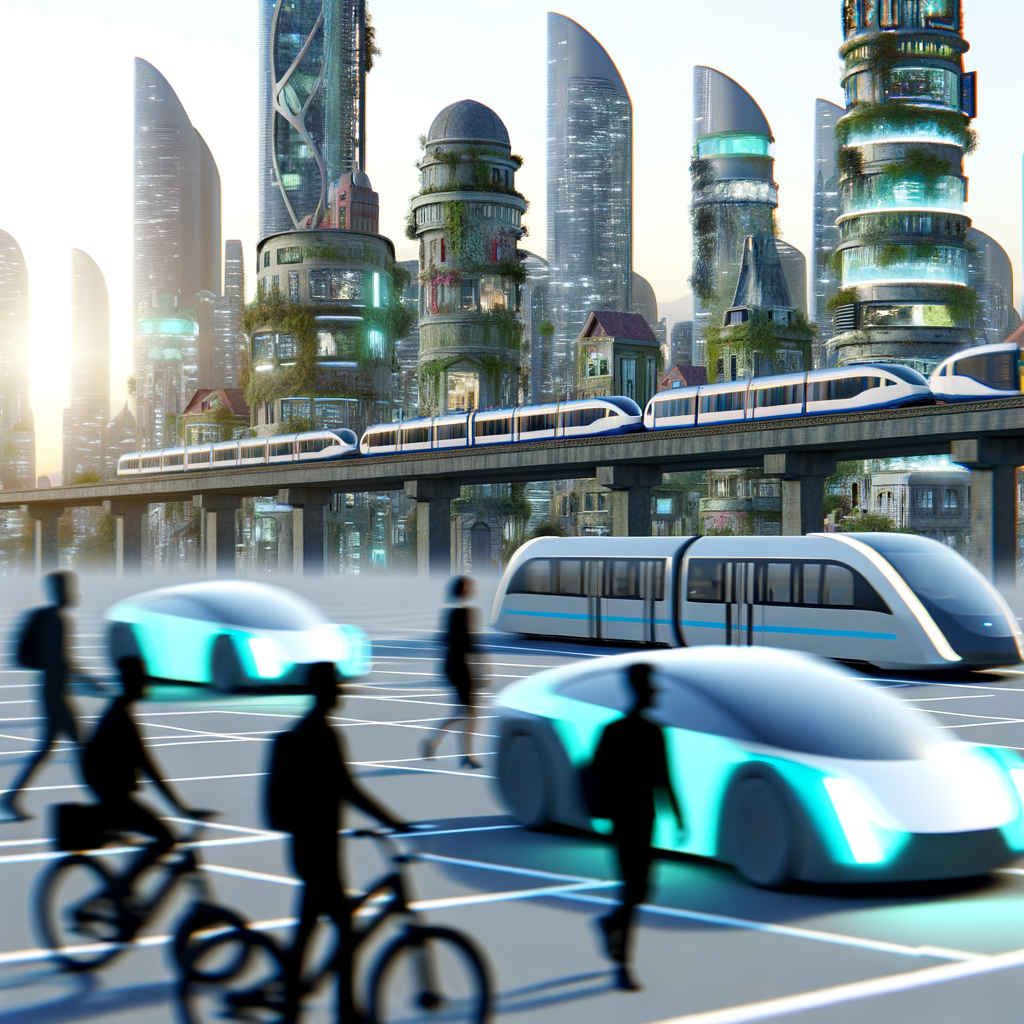
The latest market analysis reveals transformative transportation trends, spotlighting a shift towards sustainable mobility solutions. This includes a resurgence in public transportation enhanced by smart city solutions, the adoption of electric vehicles (EVs) within ride-sharing services and car-sharing programs to mitigate environmental impact, and the growth of bike-sharing initiatives addressing urban congestion. Additionally, the development of autonomous vehicles (AVs) promises further advancements in safety and efficiency. These trends are propelled by technological innovations, changing consumer behavior, and a supportive regulatory landscape, marking a pivotal moment in the evolution of sustainable transportation and urban mobility.
In an era where the pace of technological innovations and environmental considerations shape the very fabric of our societies, understanding the dynamics of transportation and mobility becomes crucial. The latest Mobility Report emerges as a pivotal compass guiding stakeholders through the evolving landscapes of transportation trends and mobility solutions. This comprehensive document delves deep into the heart of public transportation, ride-sharing services, car-sharing programs, and the burgeoning realm of electric vehicles (EVs), offering a panoramic view of the current state and future trajectories of movement. From bike-sharing initiatives to the frontiers of autonomous vehicles and smart city solutions, the report stands as a testament to the relentless pursuit of sustainable transportation. By weaving together market analysis, consumer behavior, technological innovations, the regulatory landscape, and the environmental impact, it paints a vivid picture of a sector at the crossroads of change. "Decoding the Future: A Deep Dive into Transportation Trends and Mobility Solutions" aims to unveil the latest advancements and challenges in public transportation, ride-sharing services, and beyond, providing invaluable insights for policymakers, businesses, researchers, and stakeholders poised at the brink of tomorrow's mobility paradigms.
"Decoding the Future: A Deep Dive into Transportation Trends and Mobility Solutions – Unveiling the Latest in Public Transportation, Ride-Sharing Services, and Beyond"
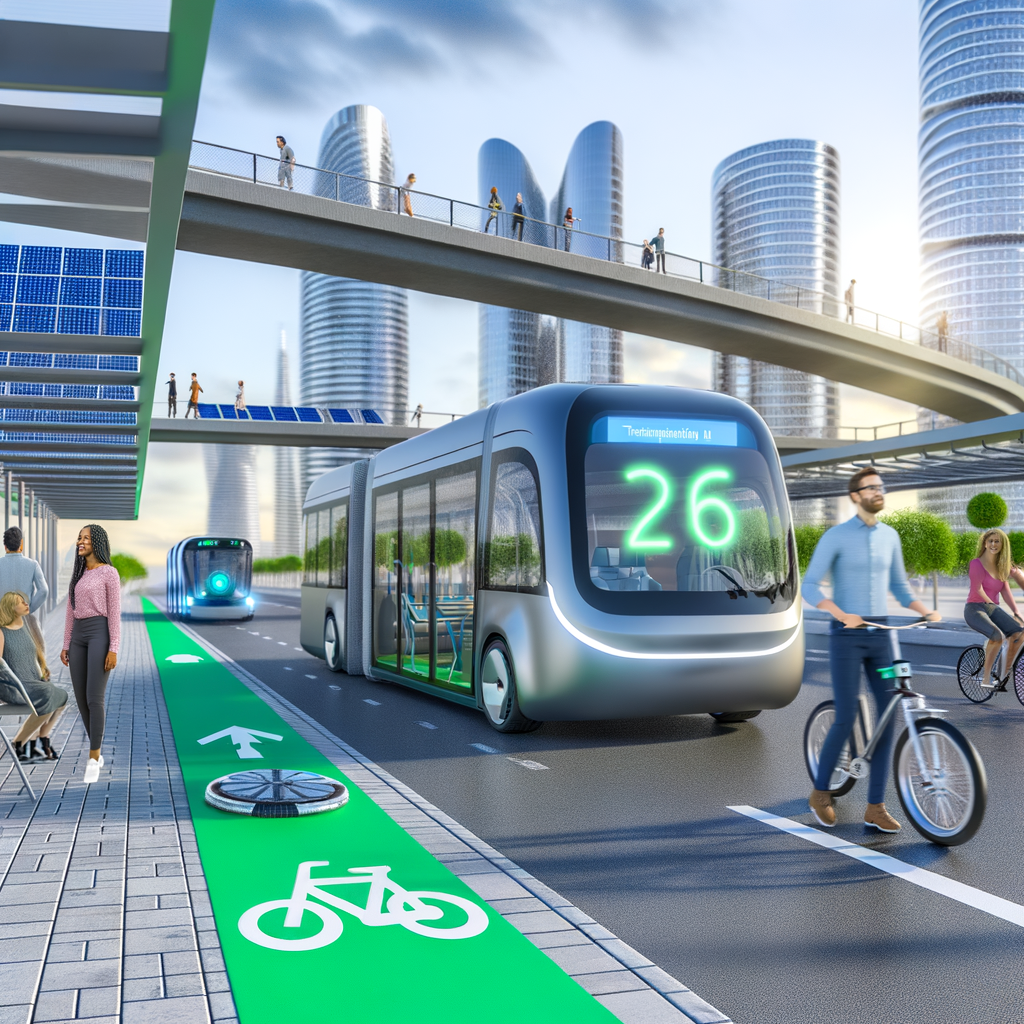
In an era marked by rapid technological innovations and shifting consumer behavior, understanding the latest transportation trends and mobility solutions is crucial for navigating the future. Recent market analysis points to a significant transformation in how people commute, underscored by advancements in public transportation, ride-sharing services, car-sharing programs, and beyond. This deep dive into the mobility sector reveals the convergence of sustainability, technology, and user convenience shaping tomorrow's transportation landscape.
Public transportation, long the backbone of urban mobility, is undergoing a renaissance through tech-driven enhancements. Cities worldwide are investing in smart city solutions, integrating real-time data and mobile applications to improve service efficiency and rider experience. This evolution signifies a shift towards more accessible, reliable public transit systems that cater to the digital-native commuter, aligning with broader sustainable transportation goals.
Ride-sharing services have emerged as a formidable force in urban mobility, offering an on-demand alternative that complements traditional public transport networks. These platforms have not only revolutionized how people move within cities but have also spurred discussions around the regulatory landscape governing such services. As consumer preferences lean towards convenience and sustainability, ride-sharing, along with car-sharing programs, are increasingly adopting electric vehicles (EVs) to minimize their environmental impact. This trend not only reflects growing environmental consciousness but also aligns with global efforts to reduce carbon emissions in the transportation sector.
Electric vehicles stand at the forefront of this mobility revolution, driven by both environmental imperatives and technological advancements. The surge in EV adoption is supported by an expanding infrastructure of charging stations, governmental incentives, and enhancements in battery technology, making EVs more accessible and practical for everyday use. Moreover, as EVs become more integrated into car-sharing and ride-sharing fleets, they play a pivotal role in advancing urban sustainability goals.
Bike-sharing initiatives further complement this ecosystem, offering a healthy, eco-friendly transportation alternative that addresses the "last-mile" challenge in urban commutes. These programs have gained traction in cities looking to reduce traffic congestion and pollution, while also promoting physical activity among residents.
Perhaps the most transformative aspect of future mobility solutions is the advent of autonomous vehicles (AVs). While still in the developmental stage, AVs promise to redefine transportation norms, offering safer, more efficient travel options. The integration of AVs into public transit, ride-sharing, and car-sharing services could significantly enhance the efficiency of urban mobility systems, reducing the need for personal vehicle ownership and thereby decreasing traffic congestion and environmental impact.
Technological innovations, alongside a changing regulatory landscape, are shaping a new era of transportation that prioritizes sustainability, efficiency, and user convenience. As we decode the future of transportation, it's clear that mobility solutions are evolving rapidly, driven by a desire to meet the environmental, social, and economic challenges of our time. Understanding these trends and their implications is essential for policymakers, businesses, and consumers alike as we navigate towards a more sustainable, connected, and mobile world.
In the landscape of ever-evolving transportation trends and mobility solutions, the insights gleaned from comprehensive Mobility Reports illuminate the path forward for stakeholders across the spectrum. This article's deep dive into the latest developments in public transportation, ride-sharing services, car-sharing programs, electric vehicles (EVs), bike-sharing initiatives, autonomous vehicles, smart city solutions, and sustainable transportation practices offers a panoramic view of the current state and future prospects of the mobility sector. Through detailed market analysis, examination of consumer behavior, overview of technological innovations, scrutiny of the regulatory landscape, and considerations of environmental impact, we gain a holistic understanding of how these diverse elements interconnect to shape the mobility industry.
As we stand on the cusp of a new era in transportation, it is clear that the insights provided by Mobility Reports are invaluable. They not only offer a snapshot of today's mobility solutions but also forecast the trends that will define tomorrow's transportation landscape. From the surge in adoption of electric vehicles to the pioneering advancements in autonomous vehicles, and from the growing embrace of bike-sharing initiatives to the strategic development of smart city solutions, the trajectory of mobility solutions is set towards increased efficiency, sustainability, and inclusivity.
For policymakers, businesses, researchers, and stakeholders, staying abreast of these trends and leveraging the comprehensive data and analysis offered by Mobility Reports is crucial. It enables informed decision-making, strategic planning, and the fostering of innovations that align with both consumer preferences and environmental imperatives. As we navigate the complexities of the mobility sector, the insights from these reports serve as a beacon, guiding the way towards a more connected, sustainable, and efficient future.
In conclusion, the journey through the latest transportation trends and mobility solutions underscores the dynamic nature of the sector and the critical role of informed, data-driven insights in shaping its evolution. The future of transportation and mobility, replete with challenges and opportunities, demands a proactive, informed approach. Armed with the knowledge and analysis provided by Mobility Reports, stakeholders are better equipped to steer the industry towards a future that promises not only greater mobility but also enhanced sustainability and quality of life for communities around the globe.
Mobility Report
Steering the Future: Unveiling the 2023 Mobility Report on Transportation Trends and Innovations

The recent market analysis reveals key transportation trends revolutionizing mobility solutions towards sustainability. It highlights the growth of electric vehicles (EVs) supported by technological and infrastructure advancements, the transformation of public transportation through smart city solutions and autonomous vehicles, and the rise of flexible options like ride-sharing services, car-sharing programs, and bike-sharing initiatives. These trends are driven by a combination of consumer behavior, technological innovations, and an evolving regulatory landscape, all underpinned by a focus on minimizing environmental impact. This comprehensive overview points to a future of diverse, efficient, and sustainable urban mobility solutions.
In an era where the wheels of innovation never stop turning, the transportation sector stands at the forefront of a monumental shift, driven by a myriad of emerging mobility solutions and trends. The latest Mobility Report delves deep into this transformative journey, offering an exhaustive analysis and insight into how public transportation, ride-sharing services, car-sharing programs, and electric vehicles (EVs) are reshaping the way we move. From bike-sharing initiatives to the advent of autonomous vehicles, and the integration of smart city solutions, this comprehensive document navigates the intricate landscape of today's and tomorrow's mobility.
As the world leans towards more sustainable transportation practices, the report illuminates the path with data-driven market analysis, consumer behavior insights, technological innovations, regulatory updates, and the environmental impact of these shifts. It serves as a critical resource for policymakers, businesses, researchers, and stakeholders who are navigating the complex terrain of transportation trends, seeking to understand not just the current state but the direction in which global mobility is headed. With an acute focus on mobility solutions that promise to redefine our streets, this article, titled "Transportation Transformed: Navigating the Future with Emerging Mobility Solutions and Trends," embarks on a journey through the evolving dynamics of the mobility sector, heralding a new era of transportation that is smarter, cleaner, and more inclusive.
"Transportation Transformed: Navigating the Future with Emerging Mobility Solutions and Trends"
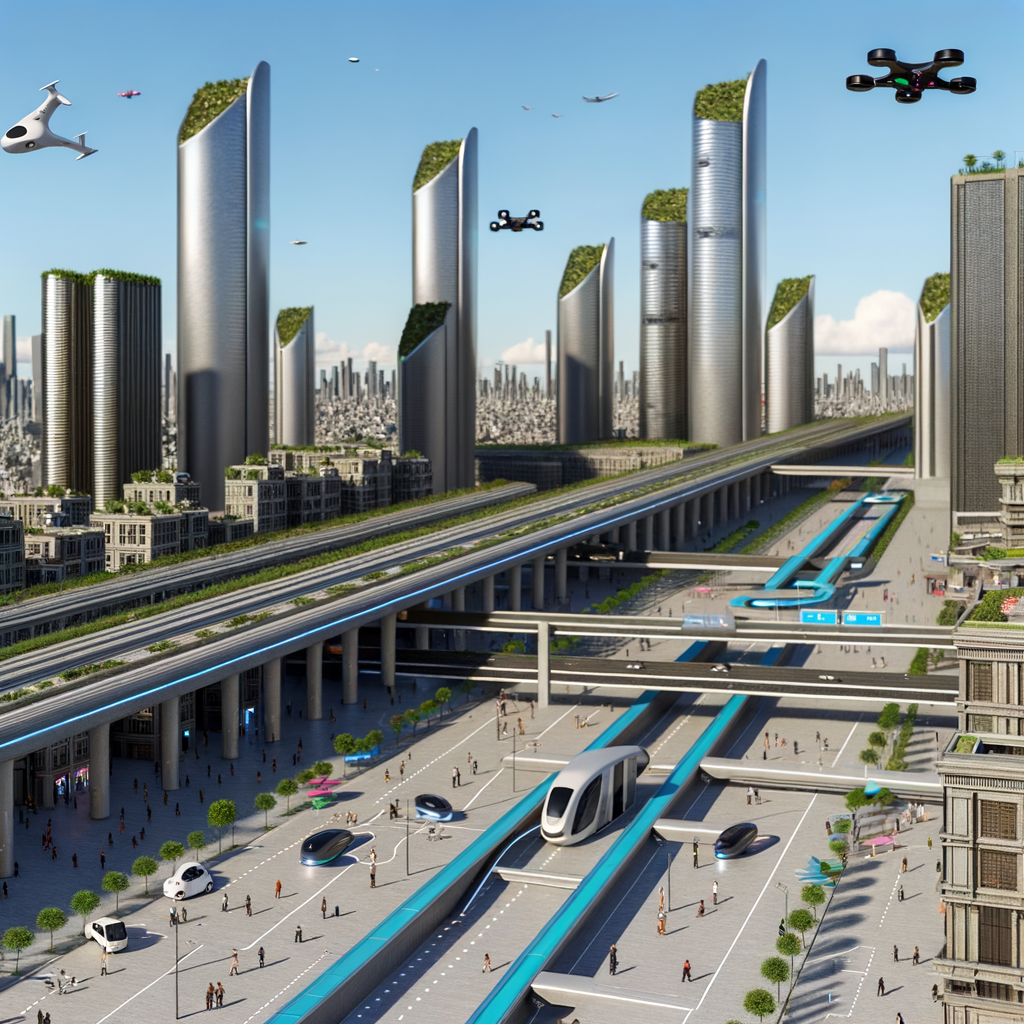
In the rapidly evolving landscape of global transportation, emerging mobility solutions and trends are reshaping how we navigate our cities and communities. The transformation is driven by a confluence of technological innovations, changing consumer behavior, and a shifting regulatory landscape, all underpinned by a growing awareness of environmental impacts. This dynamic evolution is captured in detailed market analysis and insights into the mobility sector, providing a roadmap for understanding the future of transportation.
One of the most significant transportation trends is the surge in popularity of electric vehicles (EVs), which are at the forefront of the shift towards more sustainable transportation. With advancements in battery technology reducing costs and extending range, coupled with an expanding network of charging infrastructure, EVs are becoming a more viable option for consumers and businesses alike. This transition not only reflects changing consumer preferences but also aligns with global efforts to reduce carbon emissions and combat climate change.
Public transportation is also undergoing a transformation, integrating smart city solutions to enhance efficiency and user experience. From real-time tracking apps to contactless payment systems, technological innovations are making public transit more accessible and appealing. Furthermore, the integration of autonomous vehicles into public fleets promises to revolutionize urban mobility, offering potential benefits such as improved safety and reduced congestion.
Ride-sharing services and car-sharing programs have already made significant inroads into the mobility landscape, challenging traditional notions of car ownership and offering flexible, on-demand alternatives. These services are complemented by bike-sharing initiatives, which promote active transportation and offer a sustainable option for short-distance travel. Together, these shared mobility solutions contribute to a more diversified and adaptable transportation ecosystem.
The regulatory landscape is also adapting, with policymakers striving to balance innovation with safety, privacy, and environmental considerations. New regulations and incentives are being implemented to encourage the adoption of EVs, promote sustainable transportation practices, and govern the deployment of autonomous vehicles. These regulatory frameworks are crucial for ensuring that the benefits of emerging mobility solutions are realized while mitigating potential risks.
Lastly, the environmental impact of transportation is a critical concern driving many of the trends in mobility solutions. The push towards electric vehicles, along with the adoption of bike-sharing initiatives and the emphasis on sustainable public transportation, reflects a collective effort to reduce greenhouse gas emissions and combat urban air pollution. As consumer behavior continues to evolve, there is a growing demand for transportation options that align with environmental values.
In conclusion, the transportation sector is at a pivotal moment, with emerging mobility solutions and trends offering the promise of a more efficient, sustainable, and accessible future. By leveraging market analysis and staying attuned to consumer behavior, technological innovations, and the regulatory landscape, stakeholders can navigate the complexities of this transformation and contribute to shaping a mobility ecosystem that meets the needs of tomorrow's urban environments.
In the rapidly evolving world of transportation, the insights garnered from the latest Mobility Report underscore a significant transformation across the sector. This comprehensive analysis, covering everything from public transportation enhancements to the surge in electric vehicle (EV) adoption, paints a vivid picture of a future where mobility solutions are increasingly diverse, sustainable, and technologically driven. The rise of ride-sharing services, car-sharing programs, bike-sharing initiatives, and the advent of autonomous vehicles highlight a shift in consumer behavior, favoring convenience, efficiency, and environmental sustainability.
As cities evolve into smarter, more connected environments, smart city solutions are becoming integral to supporting this new wave of mobility trends. With a keen eye on the regulatory landscape and technological innovations, stakeholders are better positioned to navigate the complexities of this transition. The environmental impact of these changes is profound, offering a blueprint for reducing carbon footprints and promoting sustainable transportation practices on a global scale.
This report not only offers a market analysis rich with current data and trends but also provides a glimpse into the future of how we move. For policymakers, businesses, researchers, and all stakeholders involved, understanding these trends is crucial for making informed decisions that will shape the mobility landscape for years to come. As we continue to push the boundaries of what's possible in transportation, the insights from this Mobility Report will undoubtedly play a pivotal role in guiding us toward a more connected, efficient, and sustainable world.
Mobility Report
Charting the Path Forward: A Comprehensive Analysis of Transportation Trends, Mobility Solutions, and Future Directions

The transportation sector is rapidly evolving, with sustainability and efficiency at its core. Recent Mobility Reports reveal key transportation trends, highlighting a significant move towards Electric Vehicles (EVs), bike-sharing initiatives, and the adoption of ride-sharing and car-sharing programs. This shift underscores the growing preference for sustainable transportation options that reduce environmental impact. Furthermore, autonomous vehicles and smart city solutions are set to transform public transportation by improving safety and convenience. Market analysis indicates a rise in consumer acceptance of these mobility solutions, driven by their eco-friendliness and cost-effectiveness. The regulatory landscape is also evolving to support sustainable practices and emissions reduction. Overall, technological innovations, consumer behavior, and regulatory changes are jointly steering the future towards more sustainable and efficient transportation solutions.
In an era where the pace of innovation matches the speed of our daily lives, understanding the evolving landscape of transportation and mobility is more crucial than ever. The latest Mobility Report offers an unparalleled glimpse into the dynamic world of transportation trends and mobility solutions, charting a course through the 21st century's most transformative shifts. From the bustling streets of burgeoning metropolises to the quiet lanes of small towns, changes in public transportation, ride-sharing services, car-sharing programs, and the surge of electric vehicles (EVs) are redefining how we move. This comprehensive document delves deep into the realms of bike-sharing initiatives, autonomous vehicles, smart city solutions, and sustainable transportation practices, providing a rich tapestry of market analysis, consumer behavior insights, technological innovations, regulatory landscape shifts, and environmental impacts.
As policymakers, businesses, researchers, and stakeholders seek to navigate this complex terrain, the Mobility Report emerges as a vital beacon, illuminating the path forward. It not only captures the current state of mobility solutions globally but also forecasts the trajectory of transportation trends, offering a roadmap to a more connected, efficient, and sustainable future. Join us as we unveil the intricacies of this ever-evolving sector, exploring how advancements in mobility can lead to smarter, greener, and more inclusive urban environments. Prepare to embark on a journey through the nexus of mobility, where the synthesis of data, technology, and visionary thinking promises to transport us to new horizons.
1. "Navigating the Future: Unveiling Transportation Trends and Mobility Solutions in the 21st Century"

In the 21st century, the quest for sustainable and efficient transportation has led to significant shifts in the way we navigate our cities and communities. With the advent of technological innovations and a growing consciousness about environmental impact, the mobility sector is undergoing a transformative phase. This evolution is captured comprehensively in Mobility Reports, which dissect transportation trends and mobility solutions, offering a glimpse into the future of movement in urban and rural landscapes alike.
Transportation trends are increasingly leaning towards greener, more efficient options. Electric Vehicles (EVs) are at the forefront of this shift, promising a significant reduction in carbon emissions. The market analysis reveals a surge in EV adoption, fueled by advancements in battery technology and an expanding charging infrastructure. This trend is complemented by the rise of bike-sharing initiatives, which offer a healthy, eco-friendly alternative for short-distance travel. These initiatives not only alleviate traffic congestion but also contribute to the physical well-being of the community members.
Ride-sharing services and car-sharing programs have revolutionized the concept of vehicle ownership, embodying the principles of a sharing economy. These mobility solutions emphasize access over ownership, reducing the number of vehicles on the road and, consequently, the environmental footprint. The consumer behavior indicates a growing acceptance of these services, driven by their convenience, cost-effectiveness, and lesser environmental impact.
Autonomous vehicles, though still in their nascent stage, promise to redefine the landscape of personal and public transportation. Their potential to enhance safety, increase efficiency, and reduce traffic congestion has captured the attention of policymakers and businesses alike. The regulatory landscape is gradually adapting to accommodate these self-driving cars, ensuring that innovation does not outpace safety.
Public transportation is also undergoing a transformation, with smart city solutions aiming to make it more accessible, reliable, and efficient. Integrating technology into public transit systems enables real-time tracking, predictive maintenance, and dynamic routing, significantly improving the user experience. Sustainable transportation practices within public systems are crucial for reducing the overall carbon footprint and moving towards a greener future.
Technological innovations play a pivotal role in shaping the future of mobility. From electric propulsion to AI-driven traffic management systems, the mobility sector is ripe with opportunities for disruption. Consumer behavior is increasingly influenced by the convenience, sustainability, and cost-effectiveness that these innovations offer.
The environmental impact of transportation is a critical concern, driving the shift towards more sustainable mobility solutions. Policymakers and stakeholders are emphasizing the need for a holistic approach that balances economic growth with environmental stewardship. The regulatory landscape is evolving, with more stringent emissions standards and support for green initiatives.
In conclusion, the 21st century presents a plethora of opportunities and challenges in the mobility sector. As depicted in Mobility Reports, the trends toward electrification, shared services, autonomous technology, and sustainable practices are shaping a future where transportation is not only about moving from point A to point B but doing so in a way that is efficient, safe, and harmonious with our planet. The continued analysis of market trends, consumer preferences, technological advancements, and regulatory updates will be crucial for navigating the future of transportation and mobility solutions.
As we journey through the 21st century, the landscape of transportation and mobility continues to evolve at an unprecedented pace. The latest Mobility Report offers a comprehensive analysis, shedding light on the transformative transportation trends and mobility solutions that are reshaping our world. From the surge in electric vehicles (EVs) and the expansion of bike-sharing initiatives to the advent of autonomous vehicles and the integration of smart city solutions, the mobility sector is at the forefront of technological innovations and sustainable transportation practices.
This report not only provides a detailed market analysis and insights into consumer behavior but also navigates through the changing regulatory landscape and the environmental impact of these advancements. Public transportation, ride-sharing services, and car-sharing programs are being reimagined to meet the dynamic needs of urban populations, prioritizing efficiency and sustainability.
In conclusion, the Mobility Report serves as an invaluable resource for policymakers, businesses, researchers, and stakeholders, offering a roadmap to understand and leverage the current trends in transportation and mobility solutions. As we look toward the future, it is clear that the journey towards more sustainable, efficient, and innovative mobility solutions is well underway, promising a greener, more connected world. The findings and analysis contained in this report underscore the importance of embracing these changes, highlighting the potential for profound impacts on how we live, work, and move around our planet.
Mobility Report
2023 Mobility Outlook: Navigating Transportation Trends, Sustainable Solutions, and Technological Innovations in the New Era of Movement

The 2023 Mobility Report dives deep into Transportation Trends, highlighting the shift towards Sustainable Transportation with a focus on Public Transportation, Ride-Sharing Services, Car-Sharing Programs, Electric Vehicles (EVs), and Bike-Sharing Initiatives. It explores the burgeoning roles of Autonomous Vehicles and Smart City Solutions in enhancing urban mobility. Offering an in-depth Market Analysis, it examines Consumer Behavior and the Regulatory Landscape, emphasizing the industry's move towards convenience, efficiency, and reduced Environmental Impact. Technological Innovations are spotlighted as key drivers in the advancement of integrated, environmentally friendly Mobility Solutions.
In an era marked by rapid technological advancements and growing environmental concerns, understanding the evolving landscape of transportation and mobility is more crucial than ever. The 2023 Mobility Report emerges as an indispensable guide, shedding light on the latest transportation trends, cutting-edge mobility solutions, and strides toward sustainable practices. This comprehensive document delves into a myriad of topics including public transportation, ride-sharing services, car-sharing programs, electric vehicles (EVs), bike-sharing initiatives, autonomous vehicles, smart city solutions, and the overarching pursuit of sustainable transportation. With its in-depth market analysis, keen insights into consumer behavior, coverage of technological innovations, updates on the regulatory landscape, and a critical eye on the environmental impact, the report is a treasure trove of information for policymakers, businesses, researchers, and stakeholders invested in the future of mobility. "Deciphering the Future of Movement: 2023 Mobility Report Highlights" serves not only as a snapshot of where we stand today but also a roadmap to where we are headed in the realm of transportation and mobility solutions globally.
"Deciphering the Future of Movement: 2023 Mobility Report Highlights Transportation Trends, Innovative Mobility Solutions, and Sustainable Practices"

In an era defined by rapid technological innovations and growing environmental concerns, the 2023 Mobility Report emerges as a crucial compass guiding us through the evolving landscape of transportation and mobility. This comprehensive document sheds light on current transportation trends, unveils cutting-edge mobility solutions, and underscores the importance of sustainable practices within the sector. By providing an in-depth market analysis, examining consumer behavior, and navigating the regulatory landscape, the report offers invaluable insights for stakeholders aiming to keep pace with the dynamic nature of global mobility.
Public transportation systems are at a pivotal juncture, with the report highlighting a shift towards more efficient, accessible, and sustainable options. Innovations in this area not only promise to enhance user experience but also contribute significantly to reducing urban congestion and environmental impact. Similarly, ride-sharing services and car-sharing programs continue to redefine urban mobility, offering flexible and cost-effective alternatives to private vehicle ownership. These services not only exemplify the sharing economy's potential to optimize resource use but also spotlight consumer preferences for convenience and sustainability.
Electric Vehicles (EVs) stand out as a cornerstone of the transition towards greener mobility. With advancements in battery technology reducing costs and extending range, EVs are becoming increasingly accessible to the general public. The report's market analysis forecasts a surge in EV adoption, driven by consumer demand, technological innovations, and supportive regulatory frameworks aimed at curbing carbon emissions.
Bike-sharing initiatives and the proliferation of autonomous vehicles further illustrate the industry's move towards diverse and interconnected mobility solutions. Bike-sharing programs, in particular, have gained traction in cities worldwide, promoting physical health, reducing traffic congestion, and lowering pollution levels. On the horizon, autonomous vehicles promise to revolutionize transportation, offering safer, more efficient, and accessible mobility options. However, their widespread adoption hinges on technological advancements and the establishment of a comprehensive regulatory landscape that addresses safety and ethical concerns.
Smart city solutions integrate these various mobility services into cohesive, user-friendly systems that prioritize efficiency and sustainability. By leveraging data analytics, IoT devices, and AI, smart cities aim to optimize traffic flow, enhance public transportation systems, and reduce environmental footprints. The report underscores the importance of such innovations in creating urban environments that support sustainable transportation practices.
Environmental impact remains a critical focus of the 2023 Mobility Report. Sustainable transportation practices are not only essential for combating climate change but also for ensuring the long-term viability of urban centers. The document calls for a collective effort among policymakers, businesses, and consumers to embrace cleaner, more sustainable mobility solutions. From electrification and renewable energy sources to the promotion of non-motorized transportation modes, the report outlines strategies for minimizing the transportation sector's ecological footprint.
In conclusion, the 2023 Mobility Report provides a comprehensive overview of the transportation and mobility sector, offering key insights into market trends, consumer behavior, technological innovations, and the regulatory landscape. As the industry stands at the crossroads of innovation and sustainability, this document serves as a pivotal resource for navigating the future of movement, highlighting the importance of integrated, sustainable, and efficient mobility solutions in shaping the cities of tomorrow.
In conclusion, the 2023 Mobility Report stands as a pivotal document, meticulously charting the course of transportation trends and unveiling the rich tapestry of mobility solutions that are rapidly reshaping the global landscape. From the surge in electric vehicles (EVs) and bike-sharing initiatives to the sophisticated development of autonomous vehicles and smart city solutions, the report encapsulates the essence of innovation steering the future of movement. It underscores the dynamic interplay between technological innovations and sustainable transportation practices, highlighting how these elements are crucial in addressing the environmental impact of urban mobility.
As the world leans more towards public transportation, ride-sharing services, and car-sharing programs, consumer behavior continues to evolve, prompting a reevaluation of traditional mobility paradigms. The report's comprehensive market analysis and insights into the regulatory landscape offer a beacon for policymakers, businesses, and stakeholders, guiding them through the complexities of the mobility sector. It is evident that the path towards a more connected, efficient, and sustainable transportation ecosystem is laden with challenges, yet brimming with opportunities.
The 2023 Mobility Report not only informs us about the current state of affairs but also sparks conversations around future possibilities. As we delve into the realms of sustainable practices, regulatory updates, and environmental considerations, it becomes imperative for all actors within the mobility industry to collaborate and innovate. By harnessing the power of data, embracing technological advancements, and prioritizing the planet's health, we can navigate towards a more sustainable and inclusive mobility future. Thus, this report is not just a reflection of where we are today but a roadmap to where we need to go, making it an indispensable resource for anyone invested in the evolution of transportation and mobility solutions globally.
Mobility Report
Shifting Gears: Exploring the Latest Transportation Trends and Innovative Mobility Solutions for a Sustainable Future
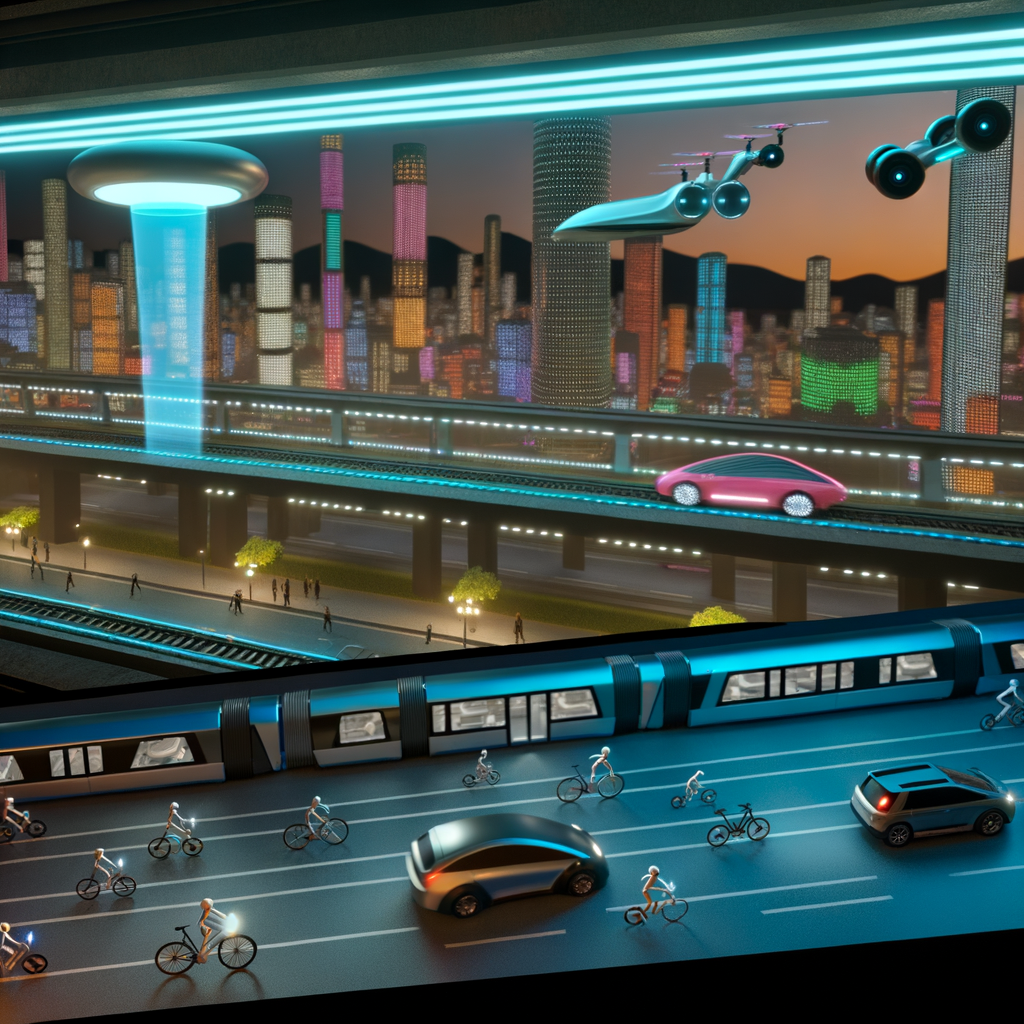
This analysis delves into key transportation trends and mobility solutions, including public transportation, ride-sharing, car-sharing, bike-sharing, electric vehicles (EVs), and autonomous vehicles, all integrated within smart city frameworks to foster sustainable transportation. Driven by technological innovations, changing consumer behavior, and a supportive regulatory landscape, these developments aim to minimize environmental impact and reshape urban mobility. Market analysis confirms a rising demand for eco-friendly and convenient transport options, highlighting the growing importance of sustainable transportation solutions in building the cities of the future.
In the ever-evolving landscape of transportation and mobility, understanding the shifts and developments is crucial for anyone looking to stay ahead in this dynamic sector. The latest Mobility Report serves as an essential compass, guiding readers through the intricate maze of transportation trends, mobility solutions, and the future trajectory of how we move. This comprehensive document delves deep into the heart of the mobility industry, covering a wide spectrum of topics from public transportation advancements to the rise of electric vehicles (EVs), and from the burgeoning popularity of ride-sharing services and car-sharing programs to the pioneering strides in autonomous vehicles and smart city solutions.
As we navigate through the 21st century, the evolution of mobility continues to reshape our urban landscapes, consumer behaviors, and environmental footprints. This article, structured in ten insightful sections, embarks on a detailed exploration of the current state and future prospects of transportation. It offers an in-depth analysis of modern mobility services, unearths the market analysis behind ride-sharing and car-sharing phenomena, and highlights the critical role of electric vehicles in steering us towards a more sustainable future. Furthermore, it shines a light on the pedal power revolution brought about by bike-sharing initiatives and examines the potential pathways autonomous vehicles could pave for smart city integration.
Equally, the report does not shy away from addressing the environmental impact of emerging mobility solutions, underscoring the green milestones achievable through sustainable transportation practices. It also zooms in on the technological innovations that are revolutionizing public transportation and ride-sharing services, while closely monitoring the consumer behavior that dictates the direction of transportation trends. Finally, it scrutinizes the regulatory landscape, revealing its significant influence on the adoption of EVs, the growth of car-sharing programs, and the overall expansion of mobility solutions.
This article is a treasure trove of information for policymakers, businesses, researchers, and stakeholders keen on deciphering the complex tapestry of the mobility sector. By providing a clear-eyed view of the market analysis, technological advancements, consumer preferences, and regulatory updates, it offers valuable insights into how we can navigate the future of movement, ensuring that our journey towards innovative, efficient, and sustainable mobility solutions is both informed and strategic.
1. "Navigating the Future of Movement: An In-Depth Analysis of Transportation Trends and Mobility Solutions"
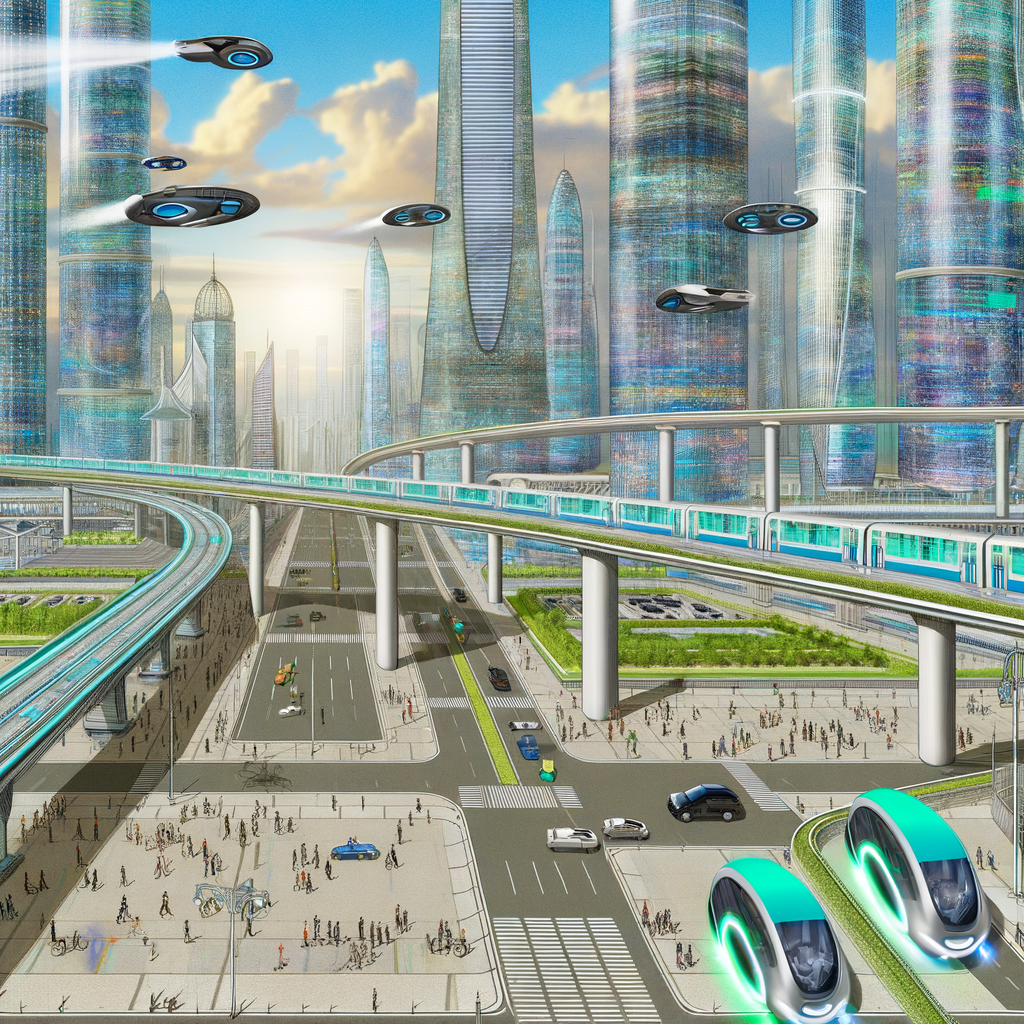
In the rapidly evolving landscape of urban development and environmental consciousness, understanding the current transportation trends and mobility solutions is crucial for shaping a sustainable future. This in-depth analysis delves into the multifaceted world of mobility, shedding light on how public transportation, ride-sharing services, car-sharing programs, and bike-sharing initiatives are transforming the way we move. Moreover, the advent of electric vehicles (EVs), autonomous vehicles, and smart city solutions marks a significant shift towards more sustainable and efficient transportation options, heralding a new era in mobility.
Public transportation, long regarded as the backbone of urban mobility, continues to adapt to the changing needs of the populace. With cities expanding and the demand for accessible and reliable transport rising, the integration of technological innovations into public transit systems is becoming increasingly important. This not only improves service delivery but also enhances the user experience, driving consumer behavior towards more sustainable commuting options.
Ride-sharing services and car-sharing programs have also gained traction, offering convenience and flexibility while reducing the number of vehicles on the road. These mobility solutions not only alleviate traffic congestion but also contribute to lower emissions, aligning with environmental sustainability goals. The rise in bike-sharing initiatives further underscores the shift towards more eco-friendly and health-conscious modes of transport, particularly in densely populated urban centers.
The electrification of the transportation sector through EVs is another pivotal trend. With advancements in battery technology and an expanding charging infrastructure, electric vehicles are becoming more accessible. This transition to EVs is critical in reducing the environmental impact of transportation, cutting down on greenhouse gas emissions, and promoting cleaner air.
Autonomous vehicles represent the frontier of technological innovations in the mobility sector. While still in the developmental phase, they promise to revolutionize transportation by improving safety, efficiency, and accessibility. The integration of autonomous vehicles into public transportation and ride-sharing services could vastly enhance the effectiveness of these mobility solutions.
Smart city solutions, which encompass a wide array of technologies designed to optimize urban living, are instrumental in advancing sustainable transportation. From intelligent traffic management systems that reduce congestion to digital platforms that facilitate multimodal transport options, these innovations support a more integrated and efficient urban mobility landscape.
The market analysis of these transportation trends and mobility solutions highlights a growing consumer preference for sustainable and convenient transport options. This shift is further supported by a regulatory landscape increasingly favoring green initiatives and infrastructure development aimed at promoting alternative modes of transport.
In conclusion, the future of movement lies in embracing these transportation trends and mobility solutions. By leveraging public transportation, adopting shared mobility services, transitioning to electric vehicles, exploring the potential of autonomous vehicles, and implementing smart city solutions, we can navigate towards a more sustainable, efficient, and accessible transportation ecosystem. The collective effort of policymakers, businesses, and consumers in adopting these mobility solutions will be paramount in addressing the environmental impact of transportation and shaping the cities of tomorrow.
In conclusion, the comprehensive insights gleaned from the Mobility Report underscore the dynamic and intricate landscape of the transportation sector. As we delve into the future of movement, it's clear that the convergence of technological innovations, consumer behavior shifts, and regulatory frameworks is reshaping the way we envision mobility solutions. From the surge in electric vehicles (EVs) and the expansion of bike-sharing initiatives to the advent of autonomous vehicles and the implementation of smart city solutions, the transportation trends of today are laying the groundwork for a more connected, efficient, and sustainable tomorrow.
The report highlights not only the burgeoning market analysis for ride-sharing services and car-sharing programs but also emphasizes the critical importance of public transportation systems in achieving comprehensive mobility solutions. With environmental impact at the forefront of global concerns, the push towards sustainable transportation practices offers a promising path to mitigate climate change and improve urban livability.
As stakeholders, from policymakers to businesses and researchers, digest the wealth of information presented in the Mobility Report, the collective goal remains clear: to navigate the complexities of the mobility sector and drive forward innovations that enhance accessibility, sustainability, and efficiency. The road ahead for transportation and mobility is undoubtedly fraught with challenges, yet the opportunities for transformative change have never been more attainable. Armed with the latest trends, regulatory updates, and market insights, the journey towards a more mobile and interconnected world continues with renewed vigor and purpose.
Mobility Report
Shaping Tomorrow’s Journey: The Comprehensive Guide to Emerging Transportation Trends and Mobility Solutions
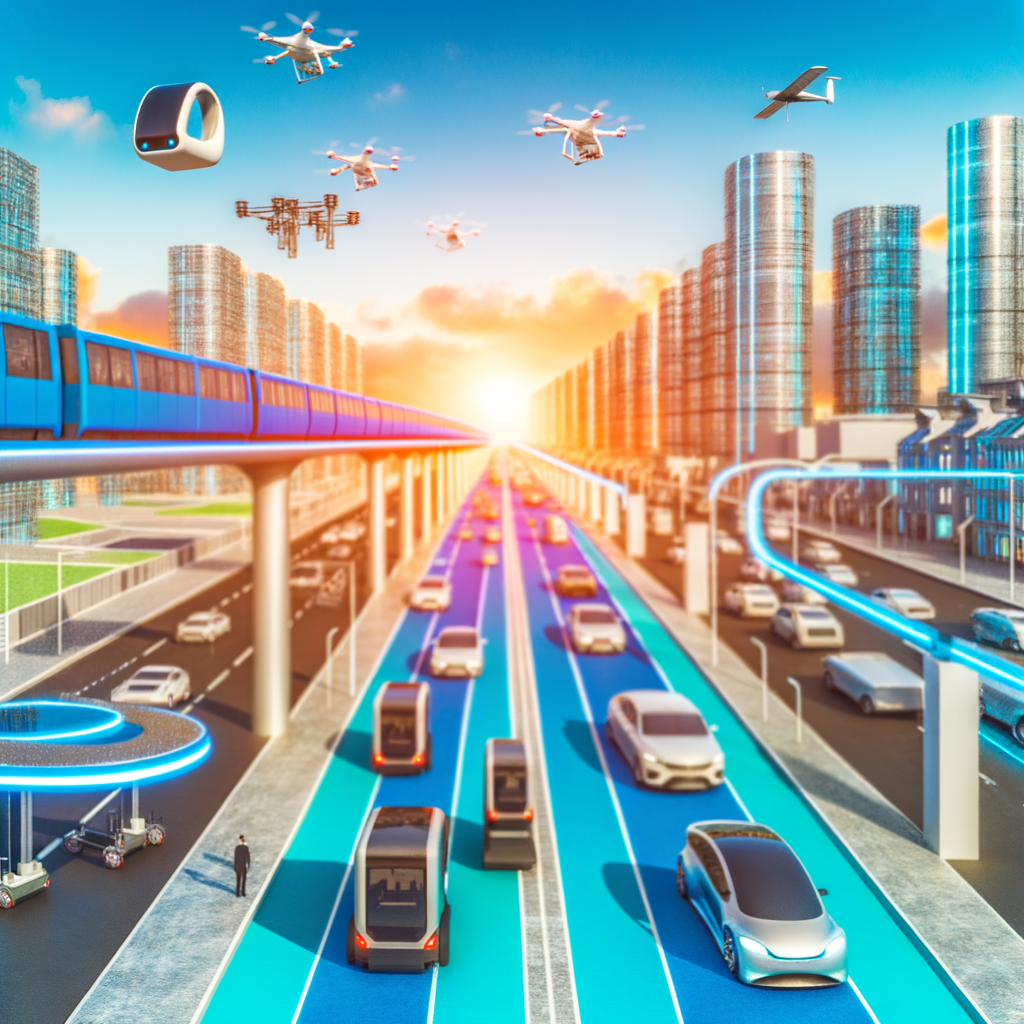
This section provides an in-depth review of current Transportation Trends and Mobility Solutions, crucial for transforming urban and rural transportation. It covers enhancements in Public Transportation, the growth of Ride-Sharing Services and Car-Sharing Programs, and the surge in Electric Vehicles (EVs), all pivotal for a more Sustainable Transportation future. The analysis also highlights the emergence of Bike-Sharing Initiatives, the development of Autonomous Vehicles, and the integration of Smart City Solutions for efficient, interconnected networks. With a focus on Technological Innovations, the evolving Regulatory Landscape, and insights into Market Analysis and Consumer Behavior, this section underscores the importance of sustainability, technology, and inclusivity in driving forward a greener, more efficient mobility landscape while considering the Environmental Impact.
In an era where the pace of urbanization is unrelenting and the clamor for sustainable living grows louder, understanding the evolving landscape of transportation and mobility is more crucial than ever. The latest Mobility Report emerges as a pivotal guide in this journey, offering an unparalleled glimpse into the current state and future trajectory of how we move. This comprehensive document delves deep into the heart of transportation trends and mobility solutions, shedding light on the multifaceted aspects of public transportation, ride-sharing services, car-sharing programs, electric vehicles (EVs), bike-sharing initiatives, autonomous vehicles, smart city solutions, and sustainable transportation practices. Through meticulous market analysis and keen insights into consumer behavior, technological innovations, the regulatory landscape, and environmental impact, the report stands as an indispensable resource for policymakers, businesses, researchers, and stakeholders. It is a beacon for those navigating the complexities of the mobility sector, seeking to drive forward with informed decisions and innovative strategies. Join us as we embark on an in-depth analysis of transportation trends and mobility solutions, where the future of movement is not just envisioned but engineered for sustainability, efficiency, and inclusivity.
"Navigating the Future: An In-Depth Analysis of Transportation Trends and Mobility Solutions"

In the rapidly evolving landscape of transportation, understanding the latest Transportation Trends and Mobility Solutions is crucial for shaping the future of urban and rural mobility. This comprehensive analysis delves into the multifaceted world of mobility, highlighting key areas such as Public Transportation, Ride-Sharing Services, Car-Sharing Programs, Electric Vehicles (EVs), Bike-Sharing Initiatives, Autonomous Vehicles, Smart City Solutions, and the overarching goal of Sustainable Transportation. Through a detailed Market Analysis and insights into Consumer Behavior, this section offers a forward-looking perspective on how these elements are transforming the way we move.
Public Transportation systems are under significant pressure to adapt to the changing needs of the urban population. With cities growing denser, the demand for efficient, reliable, and sustainable transit options has never been higher. Innovations in this sector are focusing on improving service and integrating technology to enhance user experience and operational efficiency.
Ride-Sharing Services and Car-Sharing Programs have emerged as potent disruptors in the mobility sector, offering flexible alternatives to traditional vehicle ownership. These solutions not only contribute to reducing traffic congestion but also play a pivotal role in lowering carbon emissions. As consumer behavior shifts towards more shared and sustainable modes of transport, these services are expected to see substantial growth.
Electric Vehicles (EVs) are at the forefront of the shift towards greener transportation. With Technological Innovations driving down costs and extending battery life, EVs are becoming more accessible to the general public. This, coupled with an expanding infrastructure for charging stations and supportive Regulatory Landscape, is accelerating the adoption of EVs worldwide.
Bike-Sharing Initiatives and Autonomous Vehicles represent two ends of the mobility innovation spectrum yet are integral to the future of urban transportation. Bike-sharing promotes active transport and reduces traffic congestion, while autonomous vehicles promise a future where traffic accidents are significantly reduced, and mobility is accessible to all, including those unable to drive.
Smart City Solutions are harnessing the power of data and technology to create interconnected transportation networks that are efficient, safe, and responsive to the needs of their citizens. These solutions prioritize the Environmental Impact of transportation and seek to create a sustainable ecosystem that balances human and ecological needs.
The Regulatory Landscape is also evolving to keep pace with these rapid changes. Governments and regulatory bodies are crafting policies that encourage innovation while ensuring safety, privacy, and environmental protection. This delicate balance is crucial for fostering the growth of sustainable and efficient mobility solutions.
In conclusion, the future of transportation and mobility is being shaped by a confluence of Technological Innovations, changing Consumer Behavior, and a concerted push towards sustainability. As we navigate through these changes, the focus remains on creating mobility solutions that are not only environmentally friendly but also inclusive, efficient, and capable of meeting the demands of the modern world. This in-depth analysis underscores the importance of continuous innovation and collaboration among all stakeholders to drive the mobility sector forward into a more sustainable and interconnected future.
In conclusion, the comprehensive exploration of transportation trends and mobility solutions presented in this Mobility Report underscores the dynamic and evolving nature of the sector. From the rise of electric vehicles (EVs) to the integration of smart city solutions, the report illuminates the multifaceted approaches being pursued to enhance urban mobility. The analysis reveals a growing emphasis on sustainable transportation, reflecting a collective push towards environmental stewardship and efficiency. Public transportation, ride-sharing services, car-sharing programs, and bike-sharing initiatives continue to play pivotal roles in reshaping how we navigate our cities, supported by technological innovations and a shifting regulatory landscape that favor cleaner, more accessible modes of transport.
Consumer behavior indicates a readiness to adopt these mobility solutions, driven by a combination of environmental consciousness and the convenience offered by technological advancements. Autonomous vehicles, though still in the developmental phase, promise to introduce unprecedented levels of efficiency and safety, potentially transforming the very fabric of urban transportation.
The market analysis included in the report provides valuable insights for policymakers, businesses, and stakeholders, highlighting the importance of adaptive strategies in a sector characterized by rapid change. As regulations evolve to support the sustainable transportation agenda, and as technological breakthroughs continue to redefine what is possible, the mobility industry stands at the cusp of a revolution.
This Mobility Report not only charts the current landscape of transportation and mobility but also offers a vision of the future where smart, sustainable mobility solutions dominate. The journey towards this future will require continued innovation, strategic investment, and collaborative effort across all sectors of society. As we move forward, the insights and trends outlined in this report will undoubtedly serve as a key resource for those looking to navigate the complexities of the mobility sector and drive positive change in our communities and beyond.
Mobility Report
Charting the Course: The Comprehensive Mobility Report Unveils Emerging Transportation Trends and Futuristic Mobility Solutions

This analysis dives into the latest transportation trends and mobility solutions, spotlighting the shift towards sustainable and efficient modes of travel amidst growing urban populations and environmental concerns. It covers the enhancement of public transportation, the rise of electric vehicles (EVs), and the effects of ride-sharing services and car-sharing programs on traditional transit. The piece also examines bike-sharing initiatives, autonomous vehicles, and smart city solutions as key drivers in creating sustainable transportation ecosystems. Despite the optimism, challenges such as the regulatory landscape, consumer behavior, and the environmental impact of new technologies are highlighted as pivotal in shaping the future of mobility. Through detailed market analysis and a review of technological innovations, the article provides a comprehensive outlook on how adapting to these changes is crucial for developing more connected and sustainable communities.
In an era where the way we move and connect is undergoing transformative changes, the latest Mobility Report emerges as an indispensable guide through the evolving landscapes of transportation and mobility solutions. This document not only delves into the current state and future prospects of the sector but also unpacks the intricate tapestry of transportation trends, from the burgeoning adoption of public transportation and ride-sharing services to the innovative strides in electric vehicles (EVs) and autonomous vehicles. As cities and societies strive to reconcile the demands of growth with the imperatives of sustainability, the report offers a panoramic view of the mobility ecosystem, covering car-sharing programs, bike-sharing initiatives, and the integration of smart city solutions.
The report is structured to provide a comprehensive analysis across various dimensions of the mobility sector. It begins by "Navigating the Future of Movement," offering an in-depth analysis of transportation trends and mobility solutions that are shaping the global landscape. Subsequent sections such as "The Evolution of Transit" and "From Ownership to Access" explore the shifts in public transportation, ride-sharing services, and the rise of sharing economy models that prioritize access over ownership. "Charging Ahead" examines the impact of electric vehicles on global mobility, signaling a shift towards more sustainable transportation practices.
Further, the report ventures into the high-tech realms of "The Road to Autonomy" and "Tech-Driven Transit," highlighting how autonomous vehicles and technological innovations are paving the way for smarter, more efficient transportation systems. The integration of smart city solutions and the emphasis on green moves underscore the industry's commitment to sustainable transportation and environmental well-being. Through "Market Movements" and "Consumer Shifts," readers are offered a lens into the market analysis and consumer behavior driving the adoption of mobility solutions.
As the mobility sector navigates through the complexities of the "Regulatory Landscape" and makes eco-driven decisions to mitigate the "Environmental Impact" of emerging trends, this Mobility Report stands as a crucial resource for policymakers, businesses, researchers, and stakeholders. It not only encapsulates the current dynamics and future directions of the transportation and mobility industry but also serves as a roadmap for pursuing sustainable, efficient, and inclusive mobility solutions across the globe.
1. "Navigating the Future of Movement: An In-Depth Analysis of Transportation Trends and Mobility Solutions"

In today's rapidly evolving world, understanding the dynamics of transportation trends and mobility solutions has never been more crucial. As urban populations swell and environmental concerns take center stage, the mobility sector is undergoing a transformative shift. This in-depth analysis delves into the myriad facets of the industry, from public transportation enhancements to the rise of electric vehicles (EVs), offering a panoramic view of where we're headed in our quest for more efficient, sustainable, and accessible forms of movement.
Public transportation, the backbone of urban mobility, is witnessing a renaissance. Cities worldwide are investing in smarter, cleaner, and more reliable systems to accommodate growing passenger numbers while reducing carbon footprints. This push towards sustainability is further amplified by the surge in electric vehicles (EVs), which are rapidly becoming a fixture on our roads. With advancements in battery technology and an expanding network of charging stations, EVs offer a promising path towards reducing the environmental impact of personal transport.
Ride-sharing services and car-sharing programs have also redefined what we consider public transit. By offering more flexible, on-demand options, they fill the gaps left by traditional transport methods, especially in underserved areas. This shift not only reflects changing consumer behavior but also highlights the importance of adaptability in mobility solutions. Similarly, bike-sharing initiatives are transforming urban landscapes, providing an eco-friendly alternative for short-distance travel. These programs not only alleviate traffic congestion but also promote healthier lifestyles among urban dwellers.
The frontier of transportation innovation is undoubtedly autonomous vehicles. These self-driving cars promise to revolutionize our roads by improving safety, reducing traffic jams, and offering new mobility options for those unable to drive. As they inch closer to becoming a mainstream reality, autonomous vehicles represent the pinnacle of technological innovations in the mobility sector.
Smart city solutions are integral to this evolving landscape, offering a holistic approach to urban planning and mobility. By leveraging data analytics and connectivity, cities can optimize traffic flows, improve public transportation systems, and enhance pedestrian and cyclist safety. This smart integration of technology and infrastructure is key to developing sustainable transportation ecosystems that can adapt to future challenges.
Yet, these advancements are not without their hurdles. The regulatory landscape is struggling to keep pace with technological innovations, creating a complex environment for mobility solutions to navigate. Consumer behavior, too, is a crucial factor, as adoption rates of new technologies and practices will ultimately determine their success or failure. Moreover, the environmental impact of these innovations remains a pivotal consideration. While many mobility solutions aim to reduce emissions and resource consumption, the full lifecycle effects of these technologies, including production and disposal, must be carefully managed.
In conclusion, the future of movement is being shaped by a confluence of factors, from market analysis and technological breakthroughs to regulatory shifts and environmental considerations. As we navigate through these changes, the mobility sector holds the promise of creating more connected, sustainable, and efficient communities. By understanding and embracing these transportation trends and mobility solutions, we can collectively steer towards a brighter, more mobile future.
In conclusion, the Mobility Report serves as a pivotal compass in navigating the rapidly evolving landscape of transportation trends and mobility solutions. It not only sheds light on the current state of public transportation, ride-sharing services, car-sharing programs, electric vehicles (EVs), bike-sharing initiatives, autonomous vehicles, smart city solutions, and sustainable transportation practices but also provides a forward-looking perspective on market analysis, consumer behavior, technological innovations, regulatory landscape, and environmental impact. As the mobility sector continues to transform under the influence of technological advancements and environmental considerations, this report is an invaluable tool for policymakers, businesses, researchers, and stakeholders aiming to stay ahead in the global quest for efficient, sustainable, and innovative transportation solutions. By offering comprehensive insights into the intricacies of the mobility industry, the report empowers decision-makers to craft strategies that not only respond to current demands but also anticipate future shifts in the transportation and mobility ecosystem.
Mobility Report
Steering Toward Sustainability: The 2023 Mobility Report Highlights Global Transportation Trends, Emerging Mobility Solutions, and the Drive for a Greener Future

This section offers a concise market analysis on the forefront of transportation trends, focusing on sustainable transportation fueled by technological innovations, evolving consumer behavior, and a changing regulatory landscape. It discusses the role of smart city solutions, IoT in enhancing public transportation, the benefits of ride-sharing services, car-sharing programs, and bike-sharing initiatives in reducing traffic and emissions. Additionally, the rise of electric vehicles (EVs) is examined, highlighting advancements in battery technology and charging infrastructure. The potential of autonomous vehicles for safer and more efficient mobility is also explored, underlining the shift towards eco-friendly mobility solutions and the significant environmental impact of these developments.
In an era where the pulse of the globe is increasingly defined by the movement of its people and goods, understanding the currents shaping transportation and mobility is more crucial than ever. The latest Mobility Report emerges as a beacon of insight, offering a comprehensive exploration of the transportation trends and mobility solutions that are steering us towards a more connected and sustainable world. From the bustling streets of urban centers to the sprawling networks of public transportation, and the innovative leaps in ride-sharing services, car-sharing programs, and electric vehicles (EVs), this report delves deep into the dynamics transforming how we move. It goes further, shedding light on the rising phenomena of bike-sharing initiatives, the forward march of autonomous vehicles, and the integration of smart city solutions, all while keeping a keen eye on sustainable transportation practices that promise a greener, more efficient future.
In a meticulously curated journey, "Navigating the Future of Movement: Unveiling Key Transportation Trends and Mobility Solutions for a Sustainable World," serves as the cornerstone of the report, guiding readers through a detailed market analysis, shifts in consumer behavior, technological innovations, the evolving regulatory landscape, and the environmental impact of these advances. This article is an indispensable resource for policymakers, businesses, researchers, and stakeholders vested in the nexus of mobility, offering not just a snapshot of the current state but a visionary outlook on the pathways carving the future of transportation. Join us as we embark on a comprehensive voyage through the mobility sector, where the confluence of data and insights illuminates the road ahead, charting the course for a more sustainable and interconnected world.
1. "Navigating the Future of Movement: Unveiling Key Transportation Trends and Mobility Solutions for a Sustainable World"
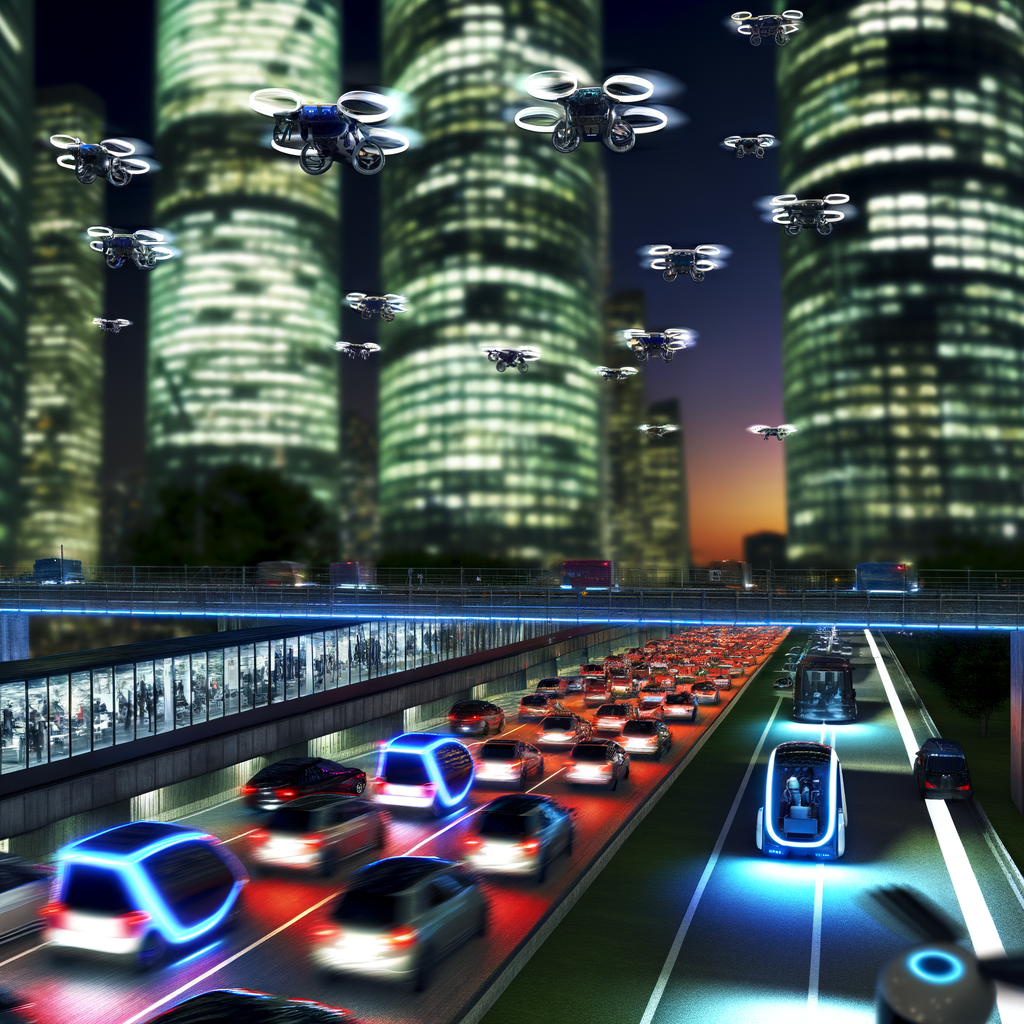
In the ever-evolving landscape of global transportation, identifying and understanding the latest transportation trends and mobility solutions is crucial for fostering a sustainable world. The dynamic nature of the mobility sector, driven by technological innovations, changing consumer behavior, and a shifting regulatory landscape, demands a comprehensive market analysis to navigate the future of movement effectively.
Public transportation, a cornerstone of urban mobility, is undergoing transformative changes to enhance efficiency and accessibility. Cities worldwide are investing in smart city solutions, integrating real-time data and Internet of Things (IoT) technologies to streamline operations and improve passenger experiences. This shift not only reflects in the increased convenience for users but also plays a significant role in reducing the environmental impact of urban transit.
Ride-sharing services and car-sharing programs have emerged as pivotal mobility solutions, reshaping how people commute. By offering flexible and economical alternatives to private vehicle ownership, these platforms contribute to reducing traffic congestion and lowering carbon emissions. The rise in consumer preference for these shared mobility modes is a clear indicator of the changing paradigms in urban transportation, emphasizing the importance of adaptability and sustainability in the mobility sector.
Electric Vehicles (EVs) stand at the forefront of the transition towards more sustainable transportation. With advancements in battery technology and an expanding charging infrastructure, EVs are becoming increasingly viable for both personal and commercial use. The environmental benefits, coupled with lower operating costs, are accelerating the adoption of electric vehicles, marking a significant shift in the automotive industry’s approach to reducing its carbon footprint.
Bike-sharing initiatives have also gained momentum as cities strive to offer more eco-friendly and health-conscious mobility options. These programs, often integrated with public transport systems, provide an efficient solution for last-mile connectivity, encouraging a shift away from car dependency in urban areas.
The advent of autonomous vehicles heralds a future where transportation is not only driverless but also potentially safer and more efficient. Although still in the developmental stage, the potential for autonomous vehicles to revolutionize the mobility landscape is immense, promising reductions in traffic accidents, enhanced traffic flow, and significant environmental benefits through optimized driving patterns.
In conclusion, the current transportation trends and mobility solutions reflect a collective move towards a more sustainable and efficient future. From electric vehicles and autonomous technology to shared mobility services and smart public transportation systems, the mobility sector is undergoing a profound transformation. As we continue to witness technological innovations and respond to the regulatory landscape and environmental considerations, the path towards sustainable transportation becomes clearer, offering promising prospects for a greener, more connected world.
In conclusion, the Mobility Report serves as a beacon for navigating the intricate landscape of the transportation and mobility sector, offering a thorough analysis of transportation trends, mobility solutions, and the regulatory landscape that shapes them. From public transportation enhancements to the rise of ride-sharing services, car-sharing programs, and bike-sharing initiatives, the report illuminates the path forward in creating more accessible, efficient, and sustainable transportation options. The surge in electric vehicles (EVs), autonomous vehicles, and smart city solutions underscores the sector's commitment to technological innovations that promise a greener, more interconnected future. Moreover, the report's insights into consumer behavior, market analysis, and the environmental impact of mobility choices reflect a growing consciousness towards sustainable transportation practices that align with global sustainability objectives. As policymakers, businesses, researchers, and stakeholders digest the wealth of knowledge within this report, the collective drive towards embracing and enhancing mobility solutions that cater to the evolving needs of societies worldwide becomes evident. The journey towards a sustainable mobility future is complex and multifaceted, but armed with the insights and trends highlighted in the Mobility Report, the road ahead appears both promising and achievable.
Mobility Report
Navigating Tomorrow: Unveiling the Latest in Transportation Trends and Mobility Solutions

This article explores the rapidly changing world of urban mobility, focusing on the latest transportation trends and mobility solutions that are transforming the way we navigate cities. Key highlights include the rise of ride-sharing services, car-sharing programs, and the integration of electric vehicles (EVs) as part of a shift towards sustainable transportation. It also looks at the impact of bike-sharing initiatives, autonomous vehicles, and smart city solutions on public transportation and urban connectivity. With a keen eye on technological innovations, market analysis, and consumer behavior, the piece discusses the environmental impact and the evolving regulatory landscape necessary to support these changes. Throughout, the article emphasizes the need for equitable access to these new mobility options, suggesting a future of efficient, accessible, and greener transportation methods.
In an era where the pace of innovation intersects with the urgent need for sustainable practices, the transportation and mobility sector stands at a crucial juncture. "Deciphering the Future of Movement: A Deep Dive into Transportation Trends and Mobility Solutions" sheds light on this dynamic industry, offering a comprehensive exploration of the forces shaping the way we move. From the resurgence of public transportation to the rise of ride-sharing services and car-sharing programs, this Mobility Report delves into the myriad facets of modern transit. It doesn't stop there—electric vehicles (EVs), bike-sharing initiatives, autonomous vehicles, and smart city solutions are also scrutinized, painting a holistic picture of the present and peering into the future of mobility.
This article serves as an essential compendium for understanding the current market analysis, consumer behavior, technological innovations, regulatory landscape, and the environmental impact of these changes. As the world grapples with the challenges and opportunities presented by shifts in transportation trends and mobility solutions, this report emerges as a critical resource for policymakers, businesses, researchers, and stakeholders. Through its detailed examination of sustainable transportation practices and insights into the evolving preferences and technologies, it provides keys to unlocking the potential of a more connected, efficient, and eco-friendly future. Join us as we navigate through the complexities of the transportation and mobility sector, unveiling the trends that are not only driving change but also paving the way for a revolution in how we move through our world.
"Deciphering the Future of Movement: A Deep Dive into Transportation Trends and Mobility Solutions"

In an era where the pulse of urban life is increasingly defined by the flow of its mobility, deciphering the future of movement has become crucial. Transportation trends and mobility solutions are evolving at a breakneck pace, driven by a confluence of technological innovations, changing consumer behavior, and a pressing need for sustainable transportation practices. From public transportation enhancements to the rise of electric vehicles (EVs), the mobility sector is undergoing a transformative shift that promises to redefine how we navigate our cities and beyond.
At the forefront of this shift are ride-sharing services and car-sharing programs, which have revolutionized the concept of vehicle ownership. These mobility solutions offer a glimpse into a future where access trumps possession, reducing the number of cars on the road and, consequently, the environmental impact of transportation. As these services become more integrated with public transportation systems, they form a seamless mobility network that enhances urban connectivity and accessibility.
Electric vehicles (EVs) are another cornerstone of the evolving mobility landscape. Bolstered by advancements in battery technology and a growing regulatory push towards decarbonization, EVs are set to dominate the automotive market. This shift not only heralds a significant reduction in greenhouse gas emissions but also reimagines the energy infrastructure of cities to accommodate EV charging stations.
Bike-sharing initiatives and the proliferation of autonomous vehicles further underscore the diversification of mobility solutions. Bike-sharing offers an eco-friendly alternative for short urban commutes, promoting physical health and reducing traffic congestion. Meanwhile, autonomous vehicles, with their promise of safer and more efficient transportation, could dramatically alter the urban fabric by redesigning city layouts to reduce parking spaces and prioritize pedestrian zones.
Smart city solutions play a pivotal role in supporting these mobility trends. Through the integration of IoT devices and AI, smart cities can optimize traffic flow, improve public transportation reliability, and ensure the efficient operation of ride-sharing and car-sharing services. This digital infrastructure is essential for the real-time data collection and analytics that underpin market analysis and the understanding of consumer behavior within the mobility sector.
However, the transition to these future mobility solutions is not without challenges. The regulatory landscape must evolve to address the safety, privacy, and ethical considerations of autonomous vehicles and the sharing economy. Additionally, ensuring equitable access to these innovations remains a pressing concern, as does mitigating their environmental impact through the sustainable design of vehicles and infrastructure.
In conclusion, the future of movement is being shaped by a dynamic array of transportation trends and mobility solutions. From the expansion of public transportation to the advent of electric vehicles and smart city integrations, these developments promise to enhance urban living while addressing environmental concerns. As market analysis continues to reveal shifts in consumer behavior and technological innovations keep pace, the mobility sector stands on the brink of a revolution. The journey towards sustainable, efficient, and accessible transportation is well underway, promising a greener, more connected world.
In the rapidly evolving world of transportation, the latest Mobility Report serves as an indispensable guide, offering a panoramic view of the current trends and future trajectories shaping the sector. By meticulously analyzing market dynamics, consumer behavior, technological innovations, and the regulatory landscape, this comprehensive document illuminates the path forward for public transportation, ride-sharing services, car-sharing programs, electric vehicles (EVs), bike-sharing initiatives, autonomous vehicles, smart city solutions, and sustainable transportation practices.
The insights drawn from the report underscore the importance of embracing mobility solutions that are not only efficient and convenient but also environmentally sustainable and aligned with the growing consumer demand for greener alternatives. As we witness an increasing integration of electric vehicles into mainstream markets, alongside the rise of autonomous technology and smart city infrastructures, it's clear that the future of movement is heading towards a more connected, automated, and eco-friendly horizon.
For policymakers, businesses, researchers, and stakeholders, staying abreast of these transportation trends is crucial. It enables them to make informed decisions, forge strategic partnerships, and innovate in ways that will meet the mobility needs of tomorrow's world. The Mobility Report, with its detailed market analysis and forward-looking insights, acts as a key resource in navigating the complex terrain of the mobility industry, helping stakeholders to chart a course towards a more sustainable, efficient, and inclusive transportation ecosystem.
In conclusion, as we stand at the crossroads of a transportation revolution, the Mobility Report emerges as a beacon of knowledge, guiding us through the intricacies of the mobility sector. Its comprehensive coverage of electric vehicles, autonomous technology, and smart city solutions, coupled with an emphasis on sustainable transportation practices, offers a glimpse into a future where mobility is not just about moving from point A to B, but about doing so in a way that is smarter, cleaner, and more inclusive.
Mobility Report
Navigating Tomorrow: Unveiling the 2023 Mobility Report on Transportation Trends, Sustainable Solutions, and Technological Innovations
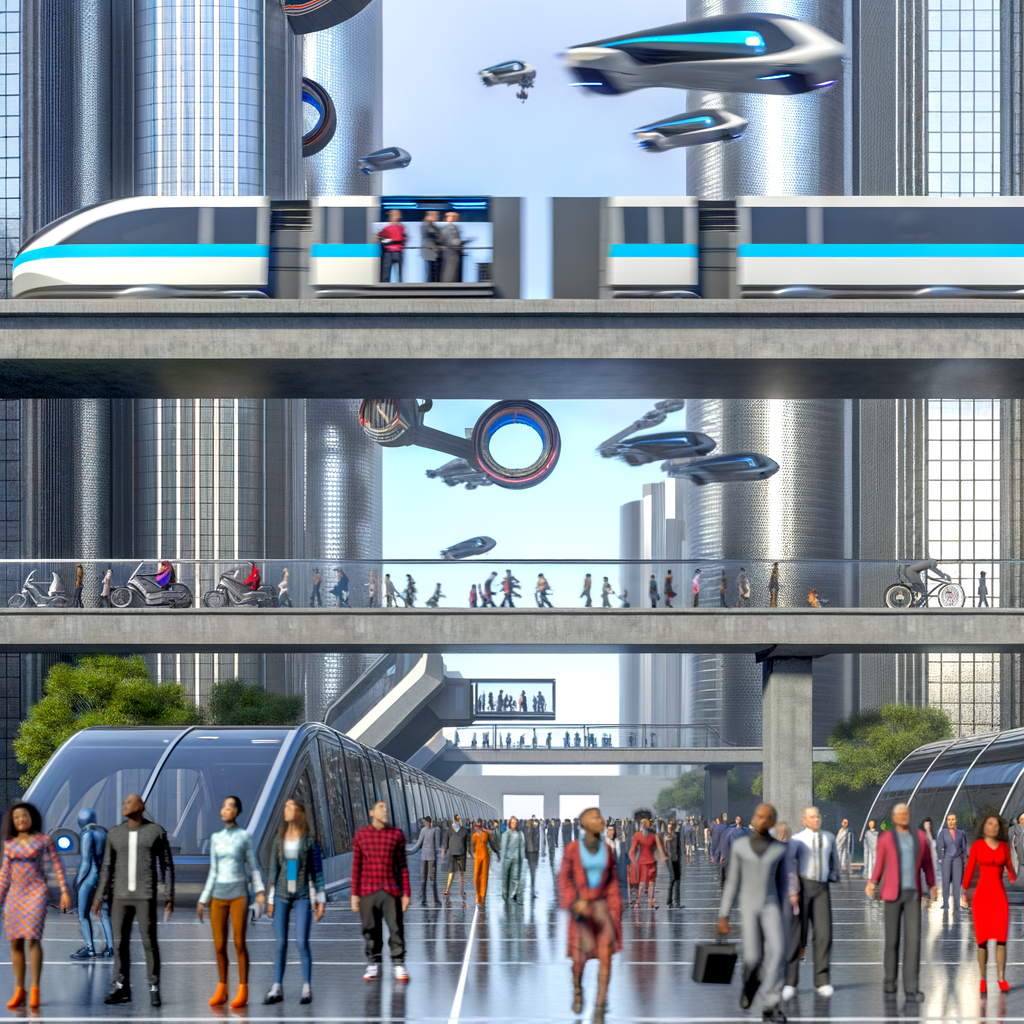
The latest Mobility Report delves into transportation trends, highlighting the surge in Electric Vehicles (EVs), the revitalization of public transportation through smart city solutions, and the growth of ride-sharing and car-sharing programs as key mobility solutions shaping a sustainable future. It emphasizes the rising popularity of bike-sharing initiatives and the transformative potential of autonomous vehicles (AVs), both aligned with environmental sustainability. The market analysis points to consumer behavior, technological innovations, and the changing regulatory landscape as driving forces behind these shifts, underscoring the environmental impact and the need for sustainable transportation practices in addressing global mobility challenges.
In an era where the contours of movement are being redrawn by a blend of technological innovations, environmental imperatives, and shifting consumer behaviors, understanding the dynamics of transportation and mobility has never been more critical. The latest Mobility Report emerges as an indispensable guide through this rapidly evolving landscape, offering a panoramic view of the current state and future prospects of transportation. From the bustling streets of burgeoning metropolises to the quiet roads of suburban enclaves, the ways in which we move are undergoing profound transformations. This comprehensive document delves deep into transportation trends, mobility solutions, and sustainable practices, providing a detailed market analysis that encompasses public transportation, ride-sharing services, car-sharing programs, electric vehicles (EVs), bike-sharing initiatives, autonomous vehicles, smart city solutions, and more. It serves as a critical resource for policymakers, businesses, researchers, and stakeholders, equipping them with the insights needed to navigate the complexities of the mobility sector. Through its exploration of consumer behavior, technological innovations, the regulatory landscape, and environmental impact, the Mobility Report sheds light on how we can move towards a more connected, efficient, and sustainable future. Join us as we embark on a journey through "Exploring the Future of Movement: A Comprehensive Analysis of Transportation Trends, Mobility Solutions, and Sustainable Practices," unraveling the forces shaping the way we travel, commute, and connect in the 21st century.
"Exploring the Future of Movement: A Comprehensive Analysis of Transportation Trends, Mobility Solutions, and Sustainable Practices"
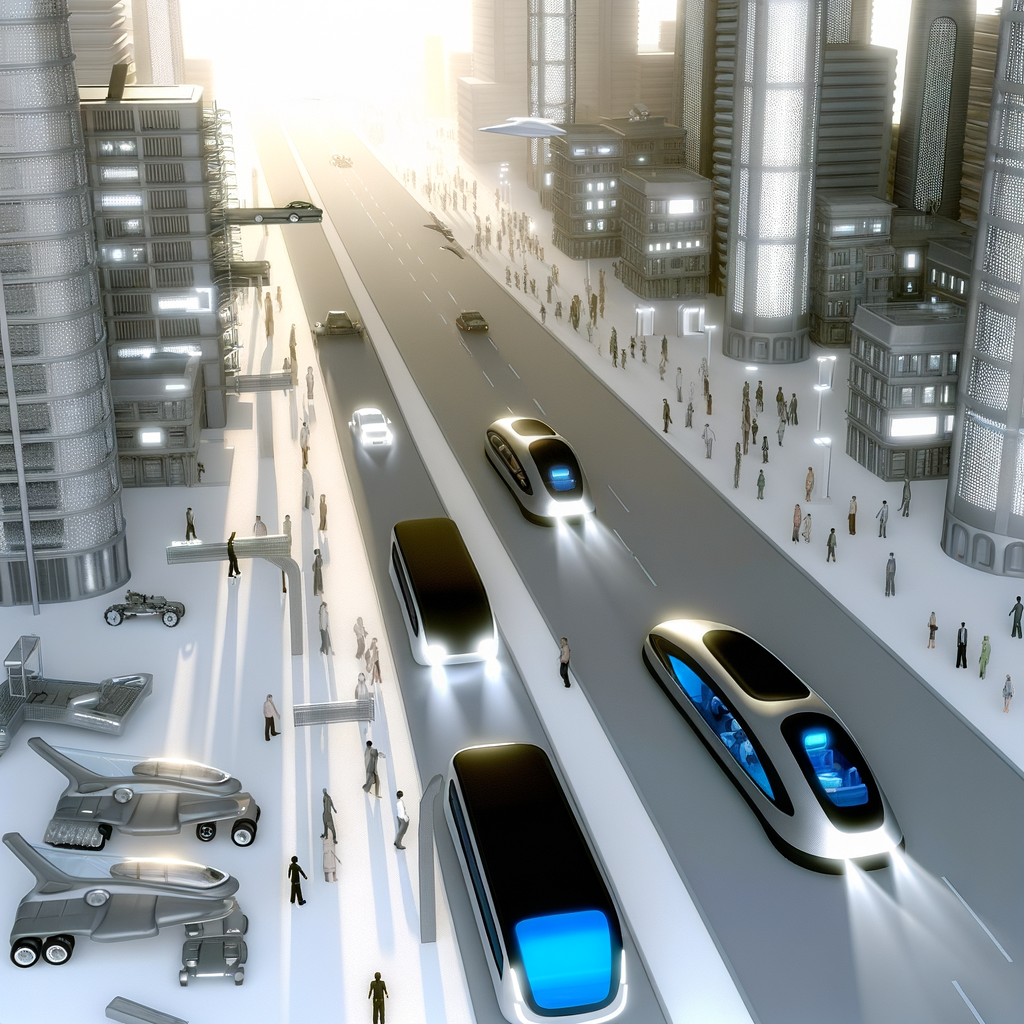
In the dynamic world of transportation, understanding the evolving landscape is crucial for shaping a sustainable and efficient future. The latest Mobility Report dives deep into the current and emerging transportation trends, mobility solutions, and the drive towards sustainable practices, offering a comprehensive market analysis that is indispensable for stakeholders across the globe.
One of the standout trends in today's mobility sector is the accelerated shift towards Electric Vehicles (EVs). With consumer behavior increasingly leaning towards environmentally friendly alternatives, EVs are not just a trend but a cornerstone of future transportation. This surge is supported by significant technological innovations in battery technology and charging infrastructure, reducing previous barriers to EV adoption.
Public transportation, while facing challenges during recent global events, remains a critical component of urban mobility solutions. The integration of smart city solutions, offering real-time data and enhanced connectivity, is revitalizing public transit systems. These advancements promise to increase efficiency, reduce wait times, and improve overall user experience, thereby reinforcing public transportation's role in the mobility ecosystem.
Ride-sharing services and car-sharing programs have transformed urban mobility, providing flexible and convenient alternatives to traditional car ownership. These services contribute to the reduction of vehicle congestion and emissions, aligning with sustainable transportation goals. However, the regulatory landscape continues to evolve as cities and countries seek to balance innovation with public safety and environmental concerns.
Bike-sharing initiatives have emerged as a popular mobility solution, particularly in dense urban areas. These systems offer an eco-friendly, health-conscious, and traffic-reducing option for short-distance travel. The integration of e-bikes into these programs is further enhancing their attractiveness and utility, making bike-sharing a staple of modern urban transportation.
The prospect of autonomous vehicles (AVs) heralds a significant transformation in mobility. While still in the developmental phase, AVs promise to revolutionize transportation by improving safety, reducing traffic congestion, and enhancing mobility for those unable to drive. The potential environmental impact of AVs, particularly when combined with electric powertrains, aligns with the goals of sustainable transportation.
Technological innovations continue to be the driving force behind these transformations, offering new opportunities and challenges for the mobility sector. As these technologies mature, the regulatory landscape will need to adapt to ensure safety, privacy, and equity in access to transportation.
The environmental impact of transportation is a critical concern, with the sector being a significant contributor to global emissions. Sustainable transportation practices are not just beneficial but essential for the health of our planet. The Mobility Report highlights the importance of integrating environmental considerations into every aspect of transportation planning and policy-making.
In conclusion, the future of movement is being shaped by a complex interplay of transportation trends, mobility solutions, and sustainable practices. From the rise of electric vehicles and the revitalization of public transportation to the advent of autonomous vehicles and the embrace of bike-sharing initiatives, the mobility sector is undergoing a profound transformation. This comprehensive analysis underscores the importance of technological innovations, consumer behavior, and the regulatory landscape in steering the path towards a sustainable and efficient transportation future.
In wrapping up our exploration of the future of movement, it's clear that the transportation and mobility sector is undergoing a transformative phase. The insights drawn from the Mobility Report underscore the critical role of technological innovations, regulatory frameworks, and environmental considerations in shaping the future of transportation. As we've seen, transportation trends are increasingly leaning towards Mobility Solutions that prioritize sustainability, efficiency, and accessibility. From Public Transportation enhancements to the rise of Ride-Sharing Services, Car-Sharing Programs, and Electric Vehicles (EVs), the momentum is unmistakable. The adoption of Bike-Sharing Initiatives, Autonomous Vehicles, and Smart City Solutions further illustrates a global shift towards more integrated, user-centric, and environmentally friendly transportation options.
The Market Analysis within the report reveals a growing consumer preference for sustainable and convenient mobility options, influenced significantly by evolving Technological Innovations and the Regulatory Landscape. This evolution suggests a future where Sustainable Transportation is not just an ideal but a practical reality. Stakeholders across the spectrum, from policymakers to businesses and researchers, must therefore remain agile, embracing the changes and challenges highlighted in the report.
Ultimately, the Environmental Impact of our mobility choices stands at the forefront of the discourse, urging all involved to consider the long-term implications of their decisions. As we move forward, the insights from the Mobility Report will undoubtedly serve as a beacon, guiding the development of transportation systems that are not only efficient and innovative but also inclusive and sustainable. The journey toward the future of movement is a collective effort, requiring collaboration, commitment, and continuous learning to navigate the ever-evolving landscape of Transportation and Mobility Solutions.
Mobility Report
Global Mobility Unveiled: Trends, Innovations, and Sustainable Practices Shaping Our Transportation Future
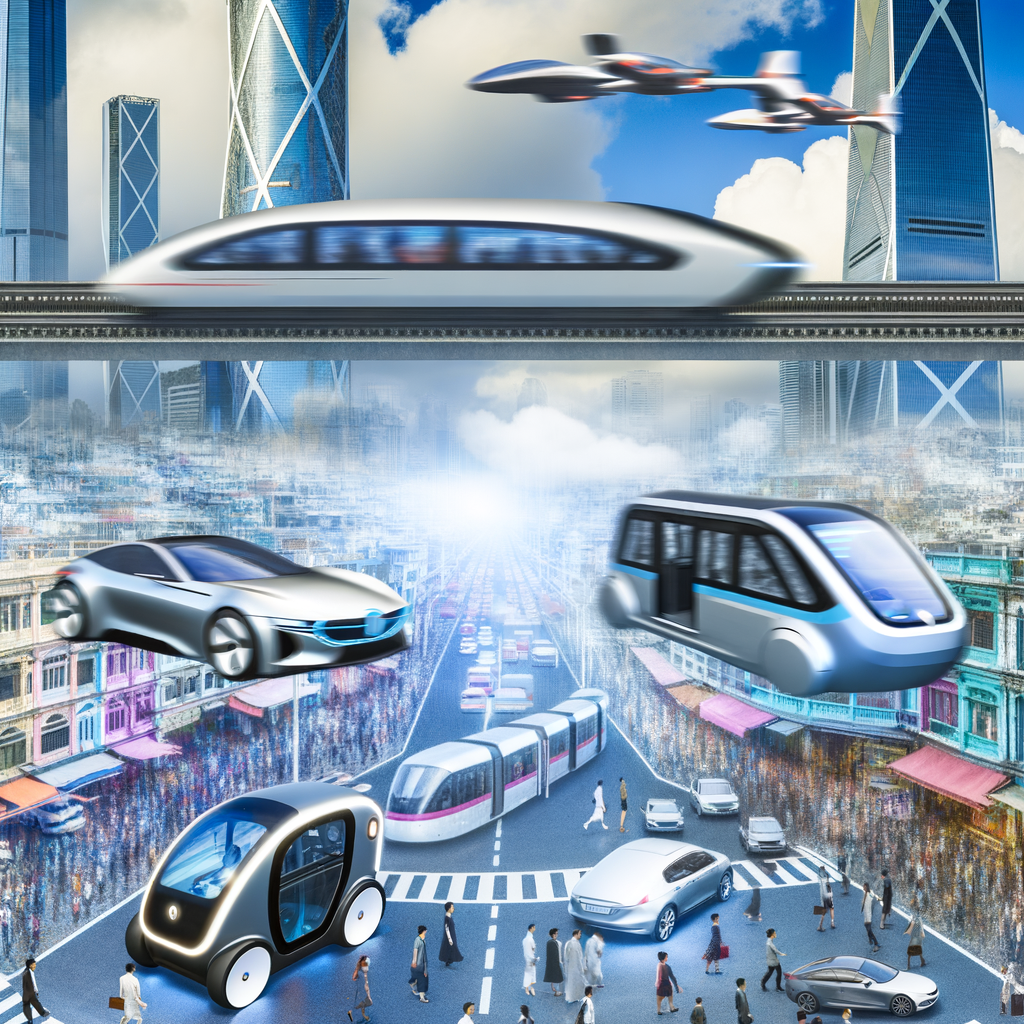
This analysis delves into the latest transportation trends and mobility solutions driving urban mobility towards sustainability. It covers the integration of public transportation, ride-sharing services, car-sharing programs, bike-sharing initiatives, electric vehicles (EVs), autonomous vehicles, and smart city solutions. The market analysis reveals a shift in consumer behavior towards sustainable and convenient options, with a focus on the expansion of EVs and the adoption of new technologies. Additionally, it discusses the changing regulatory landscape aimed at promoting eco-friendly transportation and minimizing environmental impact. Highlighting the importance of technological innovations and environmental considerations, this section offers valuable insights for policymakers, businesses, and stakeholders on embracing sustainable transportation for a more efficient and eco-friendly future.
In the rapidly evolving world of transportation and mobility, staying abreast of the latest trends, technological advancements, and regulatory changes is crucial for anyone looking to navigate the future of how we move. The Mobility Report emerges as an essential read, offering an in-depth analysis and comprehensive overview of the transportation sector's current state and its trajectory. From public transportation and ride-sharing services to the revolutionary roles of electric vehicles (EVs) and autonomous vehicles, this report delves into the myriad ways mobility solutions are reshaping our cities, economies, and the very fabric of society.
With sections like "Navigating the Future: Comprehensive Analysis of Transportation Trends and Mobility Solutions" and "Driving Change: Car-Sharing Programs and Electric Vehicles Shaping Modern Mobility," the report provides valuable insights into the evolution of public transportation, the surge in bike-sharing initiatives, and the impact of smart city solutions on sustainable transportation. Further, it evaluates the environmental implications of these shifts, offering a lens to view the green movements propelling us towards a more sustainable future.
By highlighting market analysis, consumer behavior, and technological innovations, the Mobility Report stands as a pivotal resource for policymakers, businesses, and stakeholders. It aims to decode the complexities of the regulatory landscape and the environmental impact of emerging mobility solutions. In a world where the pace of change is as rapid as it is unpredictable, this report offers clarity, presenting a roadmap for understanding and leveraging the transportation trends and mobility solutions that are defining the 21st century.
1. "Navigating the Future: Comprehensive Analysis of Transportation Trends and Mobility Solutions"
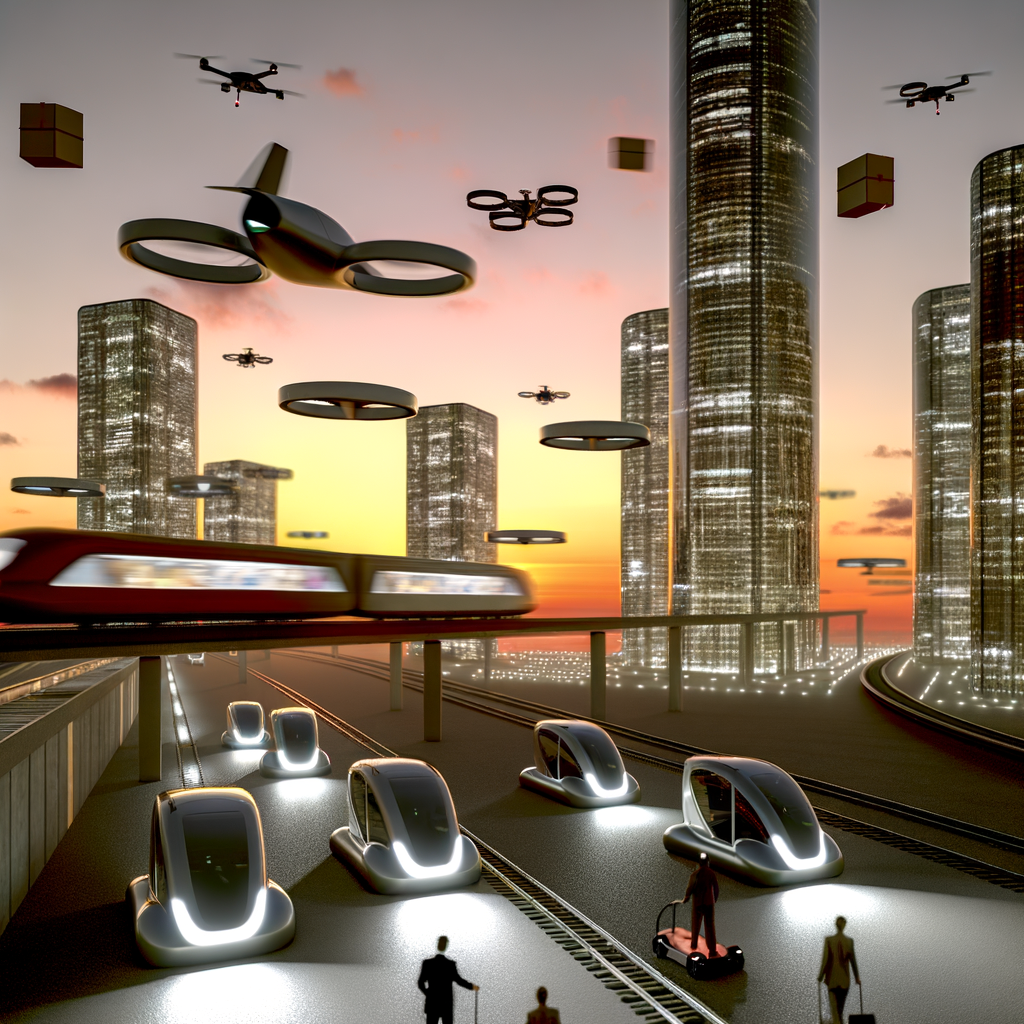
In an era where the convergence of technological innovations and environmental imperatives is reshaping the very fabric of society, understanding the evolving dynamics of transportation trends and mobility solutions has never been more critical. This comprehensive analysis delves deep into the multifaceted world of mobility, offering insights into how public transportation systems, ride-sharing services, car-sharing programs, and bike-sharing initiatives are becoming integral components of urban mobility. Moreover, the advent of electric vehicles (EVs), autonomous vehicles, and smart city solutions represents a significant shift towards sustainable transportation, promising a future where mobility is not only more efficient but also more environmentally friendly.
Market analysis reveals a growing consumer inclination towards mobility solutions that are not only convenient but also sustainable. This shift in consumer behavior is driving the rapid expansion of EVs, underscoring the industry's commitment to reducing the environmental impact of transportation. Furthermore, technological innovations in the realm of autonomous vehicles and smart city infrastructure are setting the stage for a revolution in how we conceive of and navigate urban spaces. These advancements promise to enhance the efficiency of public transportation systems while also offering novel mobility solutions that could radically alter the urban commuting landscape.
The regulatory landscape is also adapting to these changes, with policymakers increasingly focusing on creating frameworks that encourage the adoption of sustainable transportation practices. This includes regulations aimed at promoting electric vehicles, bike-sharing initiatives, and other eco-friendly mobility solutions. Such policies are crucial for ensuring that the transition towards more sustainable transportation modes is not only technologically feasible but also economically and socially viable.
Environmental considerations are at the heart of the push towards sustainable transportation. The adoption of EVs, along with the integration of autonomous vehicles and smart city solutions, has the potential to significantly reduce greenhouse gas emissions, contributing to global efforts to combat climate change. By offering a detailed analysis of these trends, this report aims to provide policymakers, businesses, researchers, and stakeholders with the information they need to navigate the future of transportation and mobility.
In conclusion, the future of transportation and mobility is being shaped by a complex interplay of market forces, consumer preferences, technological innovations, regulatory changes, and environmental concerns. From ride-sharing services and car-sharing programs to electric vehicles and bike-sharing initiatives, the landscape of mobility solutions is evolving rapidly. By embracing these changes, society can move towards a future where transportation is not only more efficient and convenient but also more sustainable, marking a significant step forward in the quest for environmental preservation and enhanced urban living.
In conclusion, the Mobility Report serves as an indispensable guide in navigating the intricate web of transportation trends and mobility solutions that are shaping the future of urban and rural landscapes alike. It casts a wide net, capturing an exhaustive array of topics from public transportation advancements to the rise of electric vehicles (EVs), and from the growth of ride-sharing services and bike-sharing initiatives to the pioneering efforts in autonomous vehicles and smart city solutions. This report not only offers a deep dive into market analysis and consumer behavior but also sheds light on the technological innovations driving these changes, the evolving regulatory landscape, and the crucial environmental impacts to consider.
As the mobility sector continues to evolve at an unprecedented pace, the insights provided by such comprehensive reports are invaluable. They equip policymakers, businesses, researchers, and stakeholders with the knowledge needed to make informed decisions that will shape the future of mobility. Whether it's through enhancing sustainable transportation practices, embracing new car-sharing programs, or adapting to changes in consumer preferences, the findings from the Mobility Report highlight the importance of staying ahead in understanding and implementing mobility solutions that are efficient, inclusive, and environmentally responsible.
In essence, the Mobility Report not only maps out the current state of the transportation and mobility industry but also charts a course towards a more connected and sustainable future. It underscores the collective effort required to address the challenges and seize the opportunities that lie ahead in the journey towards revolutionizing mobility for the betterment of communities around the globe.
Mobility Report
Exploring the Horizon: The Ultimate Mobility Report on Transportation Trends, EVs, and Smart City Innovations

TL;DR: This article provides an in-depth analysis of the latest transportation trends and mobility solutions, including public transportation, ride-sharing and car-sharing programs, electric vehicles (EVs), bike-sharing initiatives, autonomous vehicles, and smart city solutions. It emphasizes the importance of technological innovations, market analysis, consumer behavior, and the regulatory landscape in shaping a future of sustainable transportation. With a focus on minimizing environmental impact, the article highlights the surge in EV adoption and the role of various mobility solutions in creating a more sustainable, inclusive, and efficiently connected world.
In an era where the pace of technological innovation is only rivaled by the urgency of environmental concerns, the transportation and mobility sector stands at the forefront of transformative change. "Navigating the Future: A Comprehensive Analysis of Transportation Trends and Mobility Solutions" delves into the dynamic world of mobility, offering an in-depth exploration of how public transportation, ride-sharing services, car-sharing programs, and a host of other mobility solutions are reshaping the way we think about movement. From the surge in electric vehicles (EVs) and bike-sharing initiatives to the advent of autonomous vehicles and the implementation of smart city solutions, this Mobility Report provides a critical overview of market analysis, consumer behavior, technological innovations, the regulatory landscape, and the environmental impact of these changes. As sustainable transportation becomes not just a goal but a necessity, this report serves as an essential resource for policymakers, businesses, researchers, and stakeholders aiming to navigate the complexities of today's transportation trends and prepare for the mobility solutions of tomorrow.
"Navigating the Future: A Comprehensive Analysis of Transportation Trends and Mobility Solutions"

In an era where the pace of change is accelerated by technological innovations and environmental concerns, understanding the evolving landscape of transportation trends and mobility solutions is more critical than ever. The mobility sector is undergoing a transformative shift, influenced by a complex interplay of market analysis, consumer behavior, regulatory changes, and the imperative to minimize environmental impact. This comprehensive analysis delves into the multifaceted world of public transportation, ride-sharing services, car-sharing programs, electric vehicles (EVs), bike-sharing initiatives, autonomous vehicles, smart city solutions, and sustainable transportation practices, offering insights into the current state and future directions of mobility.
Public transportation systems around the globe are embracing technological advancements to improve efficiency and accessibility. The integration of digital payment methods and real-time tracking applications exemplifies how technology enhances the user experience. Meanwhile, ride-sharing services and car-sharing programs have emerged as pivotal mobility solutions, reshaping urban transportation by offering convenient and flexible alternatives to private vehicle ownership. These services not only address traffic congestion but also contribute to reducing the carbon footprint of urban commute.
Electric vehicles (EVs) stand at the forefront of the shift towards sustainable transportation, driven by consumer demand and supported by advancements in battery technology and charging infrastructure. The market analysis indicates a surge in EV adoption, signaling a significant move away from fossil fuels towards cleaner energy sources. Bike-sharing initiatives complement this trend by promoting active transportation and last-mile connectivity, further underscoring the shift towards more sustainable mobility solutions.
The advent of autonomous vehicles heralds a future where transportation is not only driverless but also potentially safer and more efficient. While the regulatory landscape continues to evolve to address safety and ethical considerations, the potential of autonomous vehicles to revolutionize transportation remains undeniably profound.
Smart city solutions, leveraging the Internet of Things (IoT) and big data analytics, are making urban areas more navigable and transportation systems more integrated. These technologies facilitate the optimization of traffic flow, reduce congestion, and enhance safety, exemplifying how digital innovation is instrumental in creating more livable cities.
However, the journey towards sustainable transportation is not without its challenges. Consumer behavior plays a crucial role in the adoption of new mobility solutions. Market analysis reveals a growing awareness and willingness among consumers to embrace sustainable transportation options, yet barriers such as cost, convenience, and infrastructure adequacy persist. Furthermore, the regulatory landscape must continue to adapt, balancing innovation with safety and environmental considerations.
In conclusion, the future of transportation and mobility is being shaped by a confluence of factors including technological innovations, consumer preferences, regulatory updates, and the urgent need to address environmental impact. As this comprehensive analysis shows, the path forward involves a holistic approach, leveraging a mix of mobility solutions to create an ecosystem that is not only efficient and convenient but also sustainable and inclusive. The ongoing evolution of this sector offers exciting opportunities for policymakers, businesses, and consumers alike to contribute to a more sustainable and connected world.
In conclusion, the Mobility Report serves as a crucial compass in navigating the evolving landscape of transportation and mobility. By offering an in-depth analysis of current transportation trends, mobility solutions, and future directions, it equips policymakers, businesses, and stakeholders with the insights needed to make informed decisions. Whether it's the surge in demand for ride-sharing services, the expansion of car-sharing programs, the innovation within electric vehicles (EVs), or the growth of bike-sharing initiatives, the report captures the dynamic nature of the sector. It also sheds light on the advancements in autonomous vehicles, the integration of smart city solutions, and the adoption of sustainable transportation practices that are set to redefine our travel experiences.
The comprehensive market analysis, insights into consumer behavior, overview of the technological innovations, updates on the regulatory landscape, and considerations of environmental impact offer a holistic view of the mobility industry. As we stand at the cusp of a transportation revolution, driven by a commitment to efficiency, sustainability, and inclusivity, the Mobility Report proves to be an indispensable resource. It not only maps out the current state of affairs but also charts a course towards a future where mobility solutions are more accessible, cleaner, and smarter. The ongoing evolution in public transportation, coupled with the push towards reducing carbon footprints and enhancing urban mobility, suggests a promising path forward. Thus, the Mobility Report underscores the importance of embracing these changes, fostering innovation, and collaborating across sectors to ensure that the future of transportation and mobility is bright, sustainable, and beneficial for all.
-
Politics2 months ago
News Articles: Artificial Intelligence (AI) Leading the Way in Politics, Industry, and Policy Internal: 0 External: 0 Total: 0 To read the complete article, click this link https://www.autonews.com/topic/politics and https://europe.auton
-

 Tech7 months ago
Tech7 months agoRevving Up Innovation: How Top Automotive Technology is Driving Us Towards a Sustainable and Connected Future
-
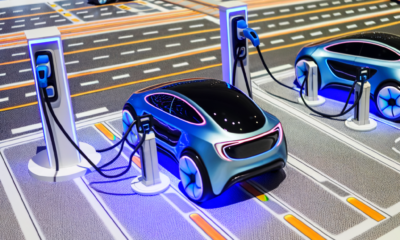
 Tech7 months ago
Tech7 months agoRevving Up the Future: How Top Automotive Technology Innovations Are Paving the Way for Electric Mobility and Self-Driving Cars
-
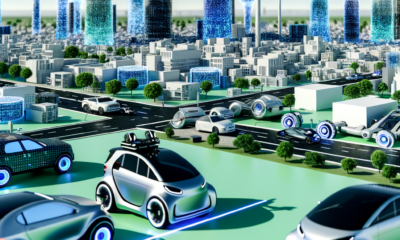
 Tech7 months ago
Tech7 months agoDriving into the Future: Top Automotive Technology Innovations Transforming Vehicles and Road Safety
-
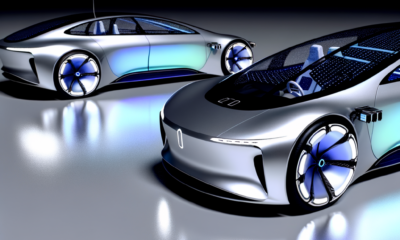
 Tech6 months ago
Tech6 months agoRevolutionizing the Road: How Top Automotive Technology Innovations are Driving Us Towards an Electric, Autonomous, and Connected Future
-
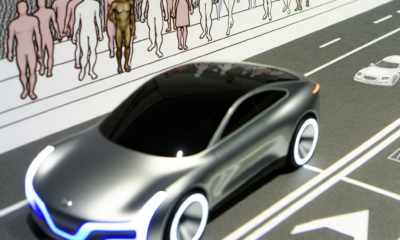
 Tech7 months ago
Tech7 months agoRevving Up the Future: How Top Automotive Technology Innovations Are Paving the Way for Sustainability and Safety on the Road
-

 Tech7 months ago
Tech7 months agoRevolutionizing the Road: Top Automotive Technology Innovations Fueling Electric Mobility and Autonomous Driving
-

 Cars & Concepts6 months ago
Cars & Concepts6 months agoPorsche Macan Electric: A Bold Leap Forward as Green Car Reports’ Best Car to Buy 2025 Finalist


